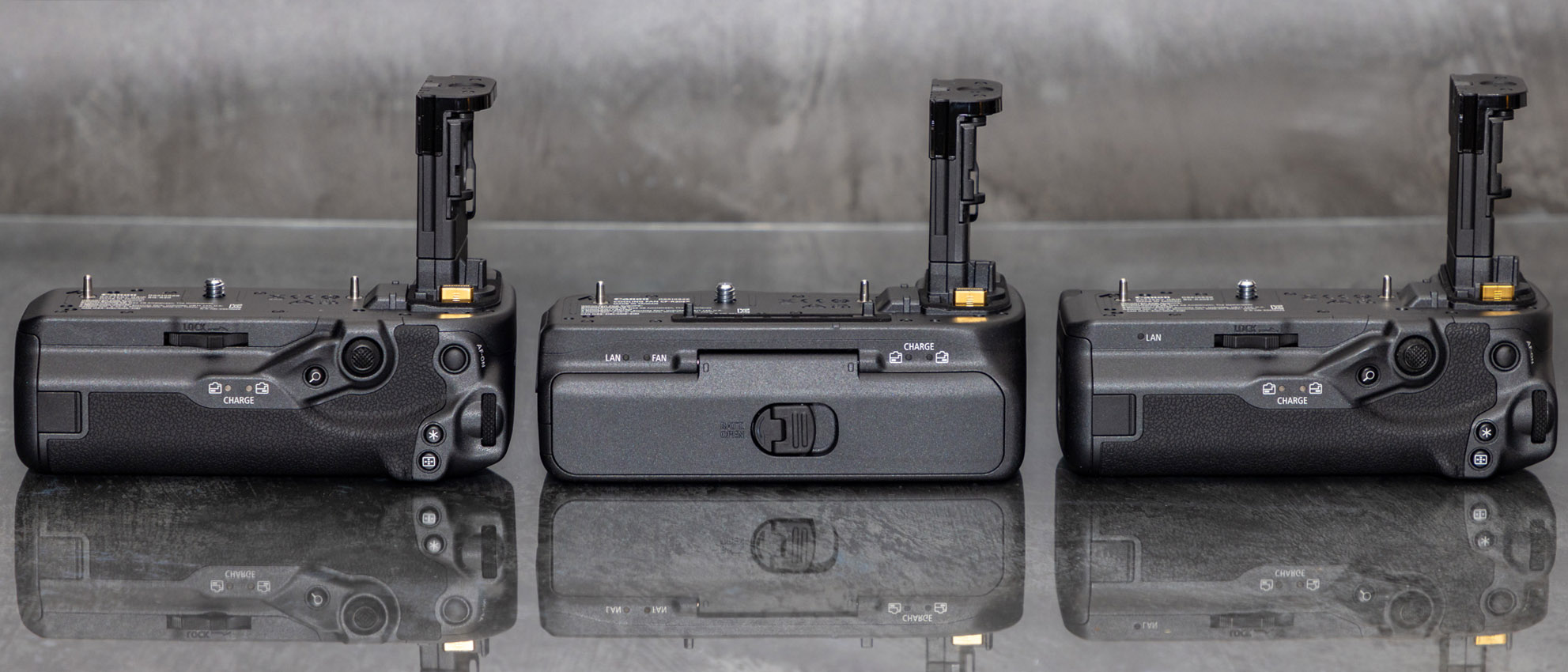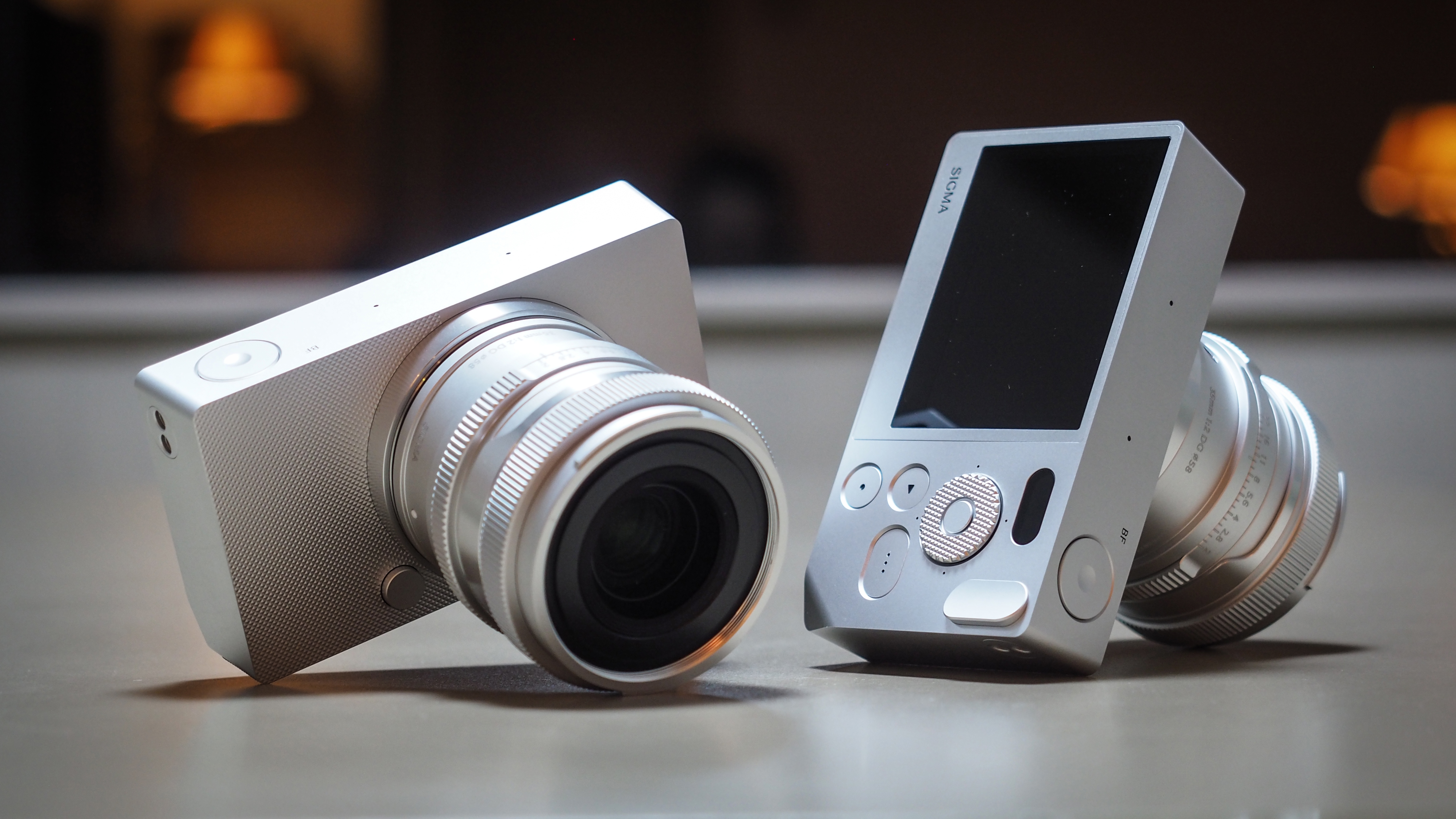Digital Camera World Verdict
Canon's trio of battery grips for the EOS R5 Mark II have the quality you'd expect from a first-party Canon product and give users three different options for their shooting styles. There's currently no third-party grips available for the R5 Mark II so owners of Canon's professional camera will need to fork out for the premium first-party products, though they are top quality. The BG-R20 and BG-R20EP are both stellar options, fully weather sealed and transform the R5 Mark II into a shape more akin to the R3 or R1 cameras for easier portrait orientation shooting, with the latter also featuring an Ethernet port. The CF-R20EP extends video recording times and will be a must-have for video and hybrid shooters, though it does have its shortcomings with weather sealing not being quite so good, and also lacks variable fan speed and omits a physical speed control. Regardless, it will be a must-have for R5 II video shooters.
Pros
- +
Top build quality
- +
Two of the grips have Ethernet Ports
- +
BG-R20 and BG-R20EP make it easier to shoot in the portrait orientation
- +
CF-R20EP extends video recording times significantly
Cons
- -
Expensive
- -
BG-R20 and BG-R20EP hamper cooling vents
- -
CF-R20EP omits a physical fan speed control and lacks variable fan speed
- -
Doesn't work with 3rd-party batteries
- -
Will work with older Canon LP-E6 and LP-E6N batteries but limits features such as Pre-Capture and 8K video recording
Why you can trust Digital Camera World
Canon's EOS R5 Mark II hybrid full-frame camera dropped last year in July alongside the flagship R1, both absolute powerhouses for pushing vast quantities of data, split-second shooting and detail-rich video files. Alongside the two new cameras, Canon also announced not one but three battery grips for the EOS R5 Mark II, giving it a form more similar to the flagship R1 with its built-in grip.
The R5 Mark II is a hybrid camera through and through, aimed at photographers, videographers and hybrid shooters who need to shoot both mediums. The three new grips are a perfect example of this, with the two BG-R20 and BG-R20EP grips good for stills shooting in the portrait orientation and space for two batteries to boost power for either stills or video recording. Whilst the CF-R20EP grip is ideal for video use with a fan to blow air through the R5 Mark II's vents for active cooling and to extend 4K and 8K video recording times. The cooling fan is also good for photographers using the Pre-Capture feature which also heats things up.
In this review I got hands-on with all three grips alongside an EOS R5 Mark II to put them through their paces and hopefully if you're an EOS R5 Mark II owner you'll be able to make an informed decision on which of the three grips is right for you by the end of this article.
Canon BG-R20
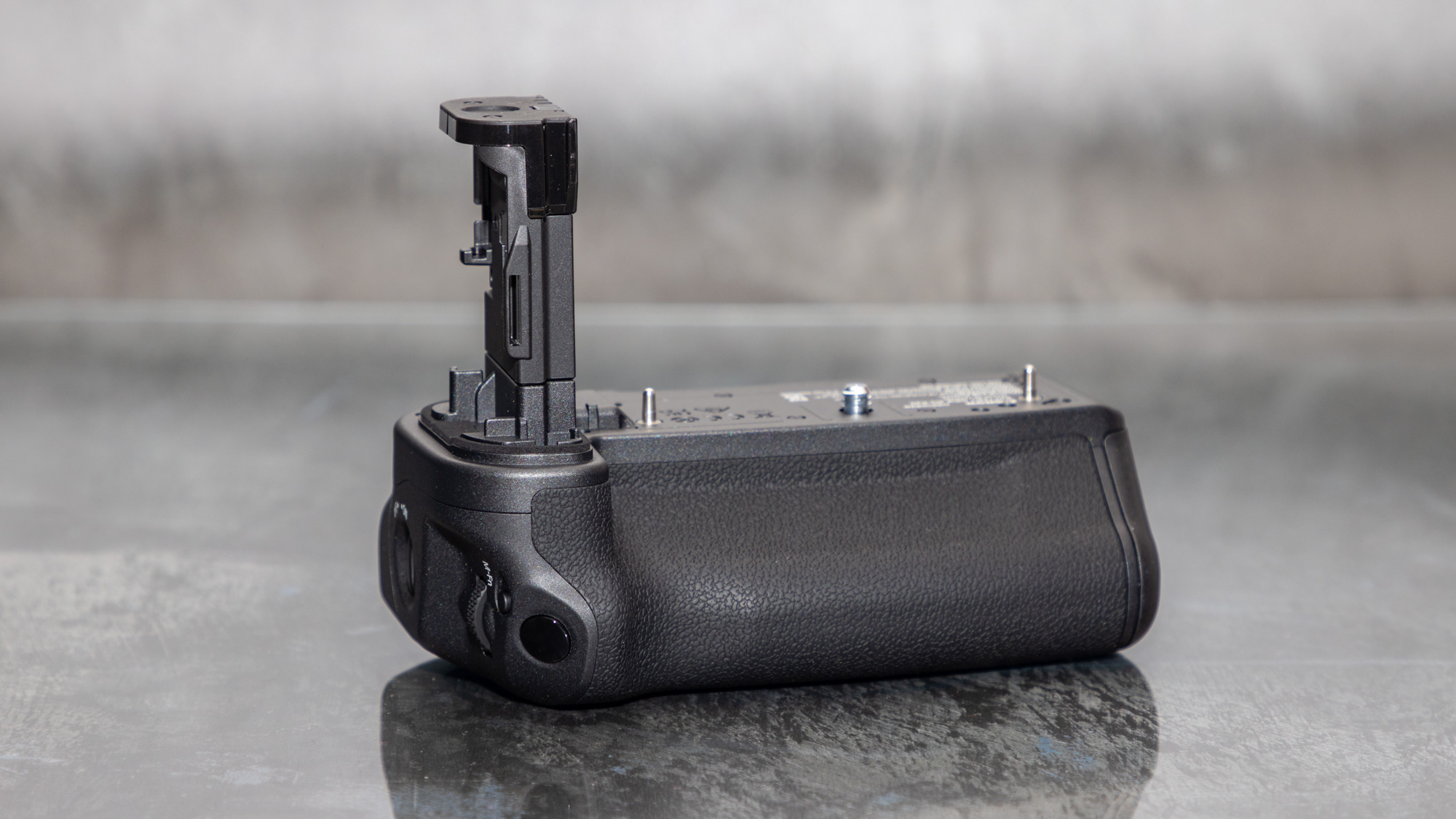
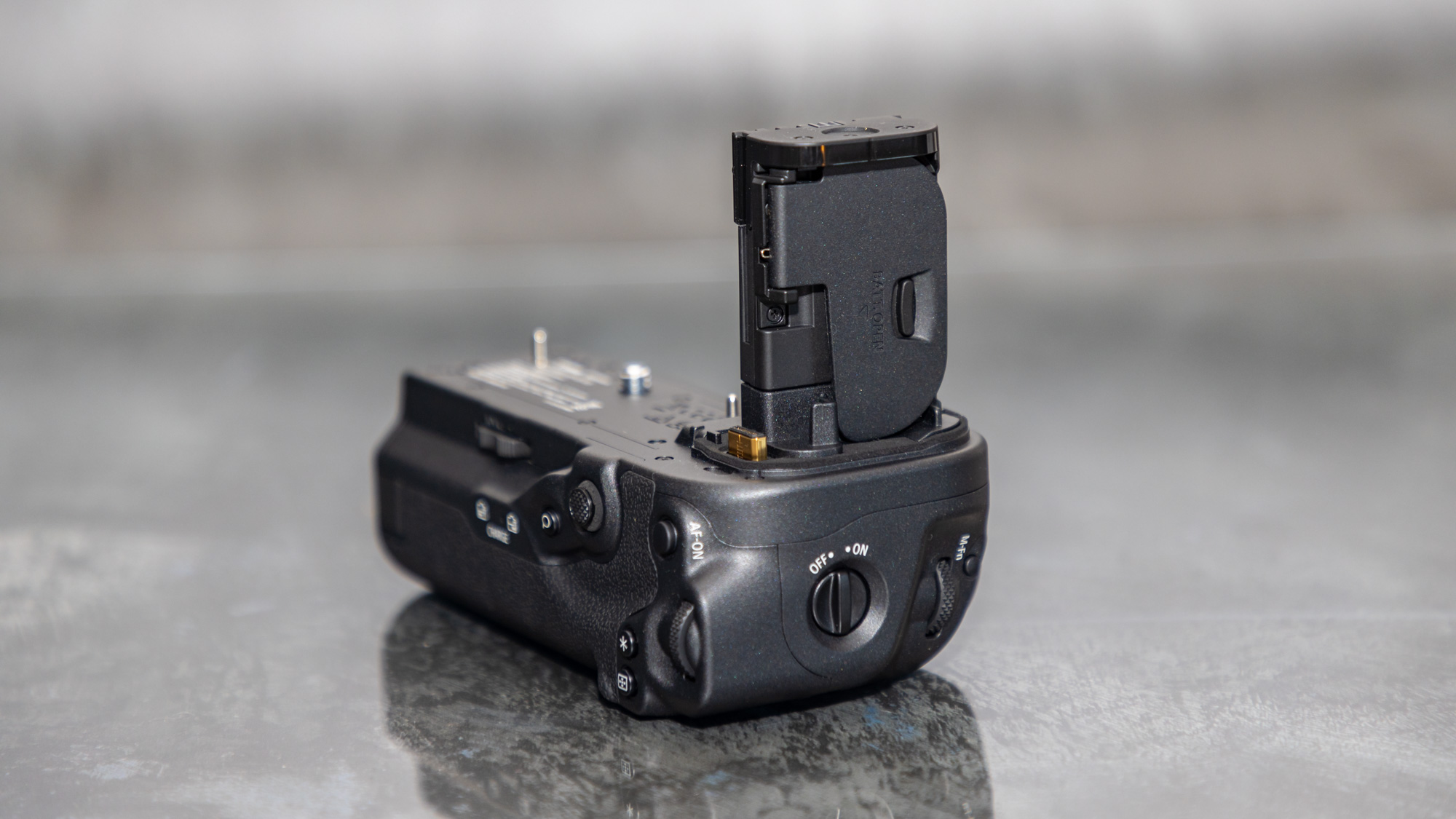
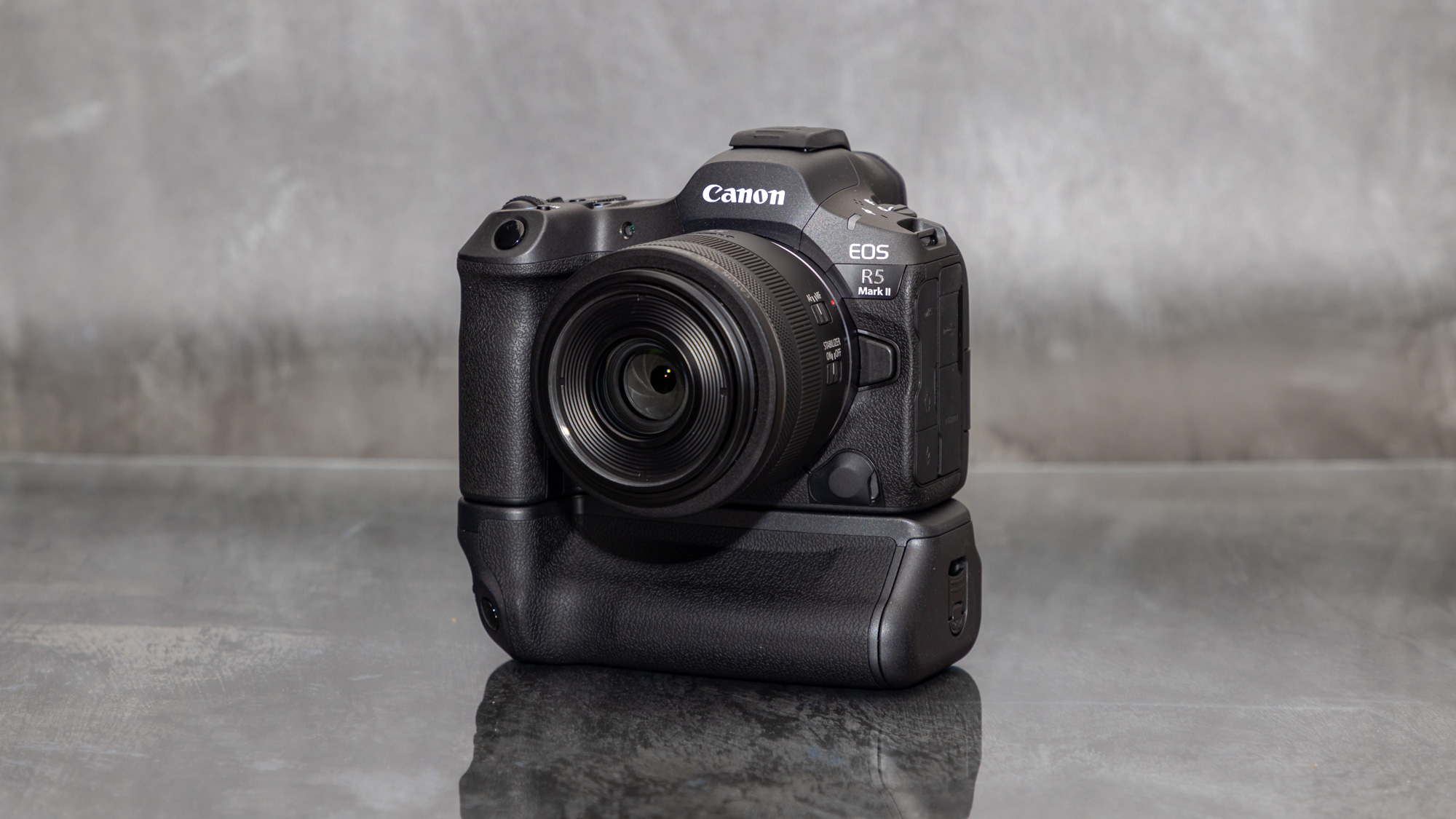
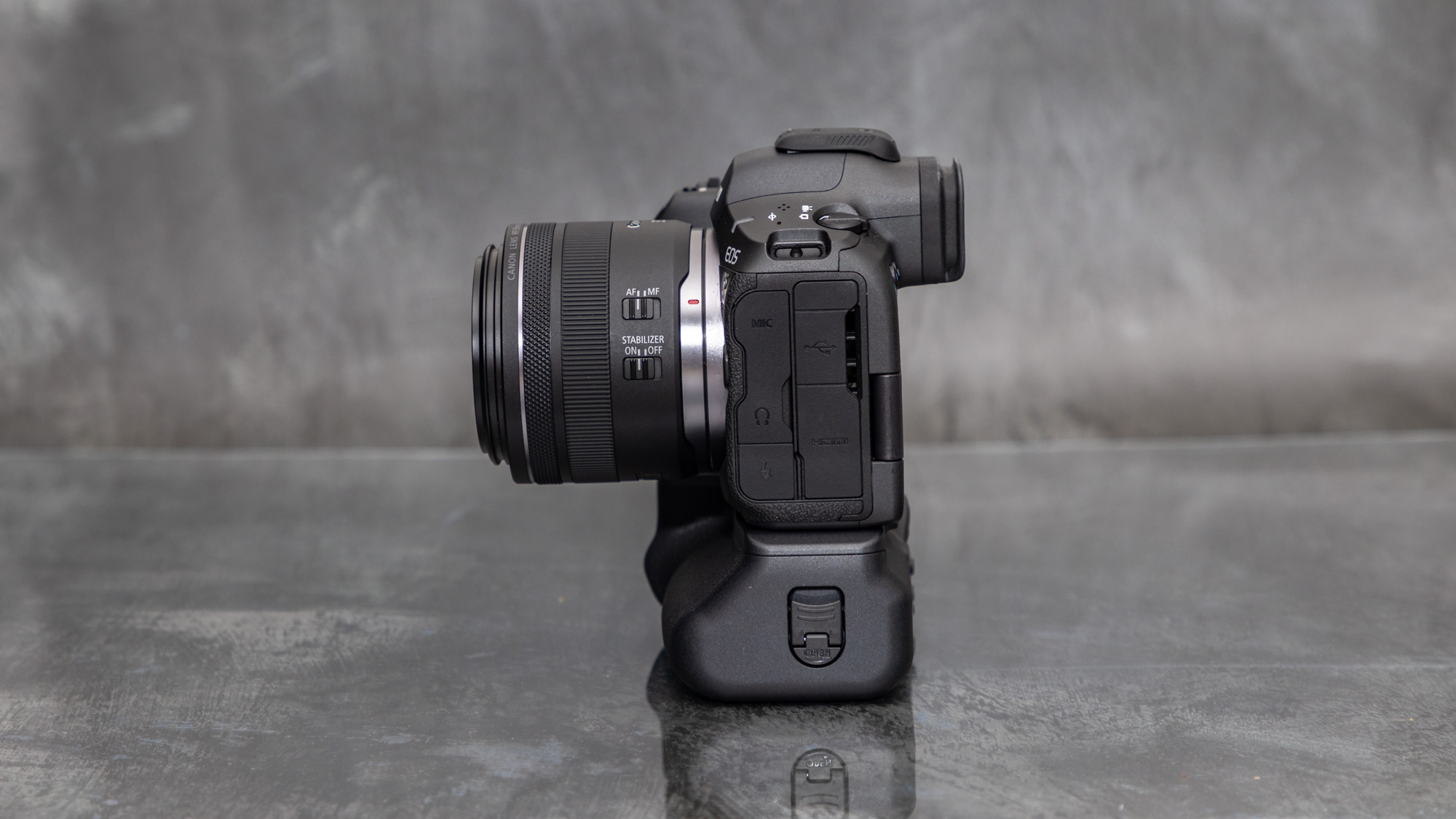
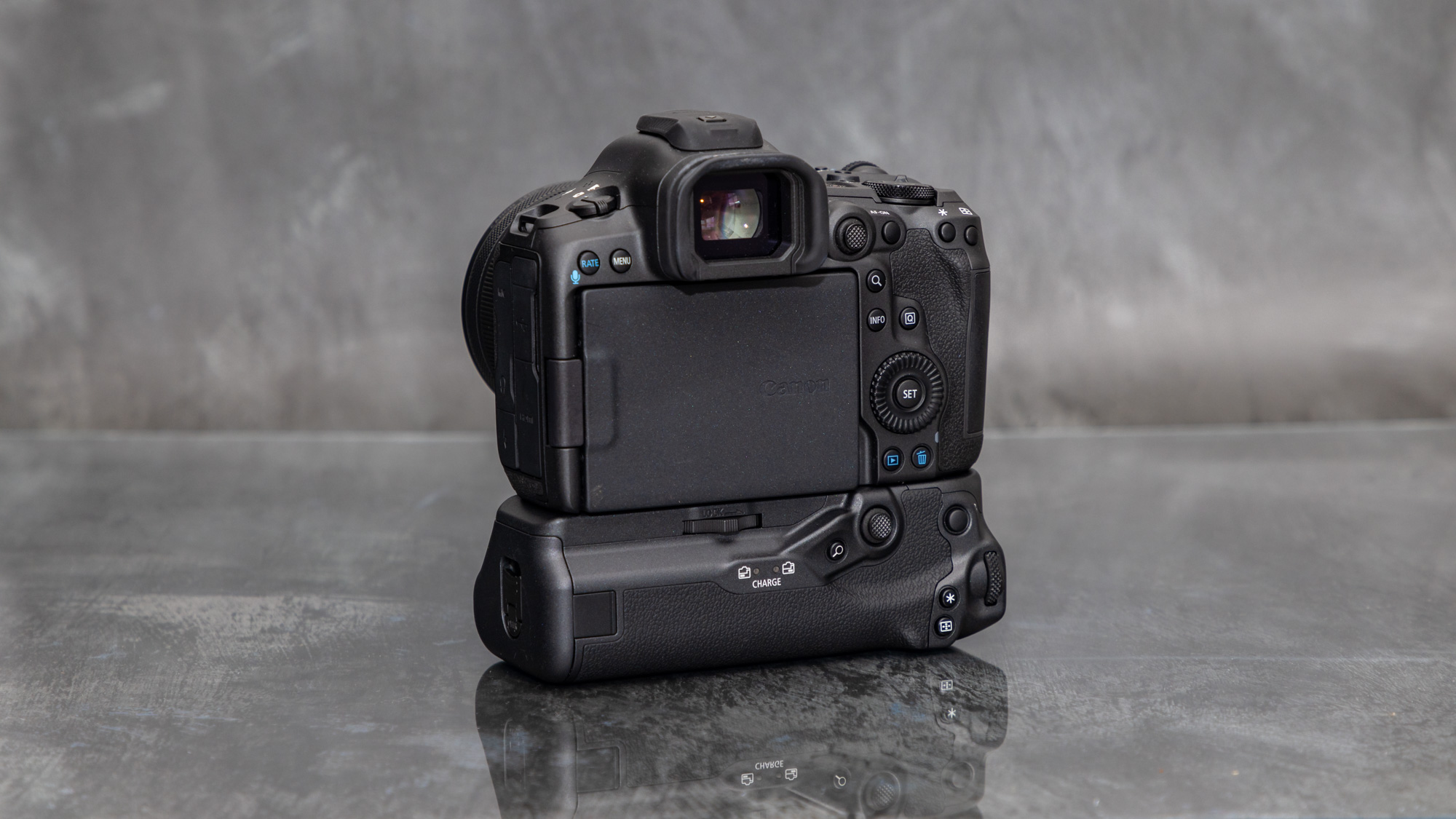
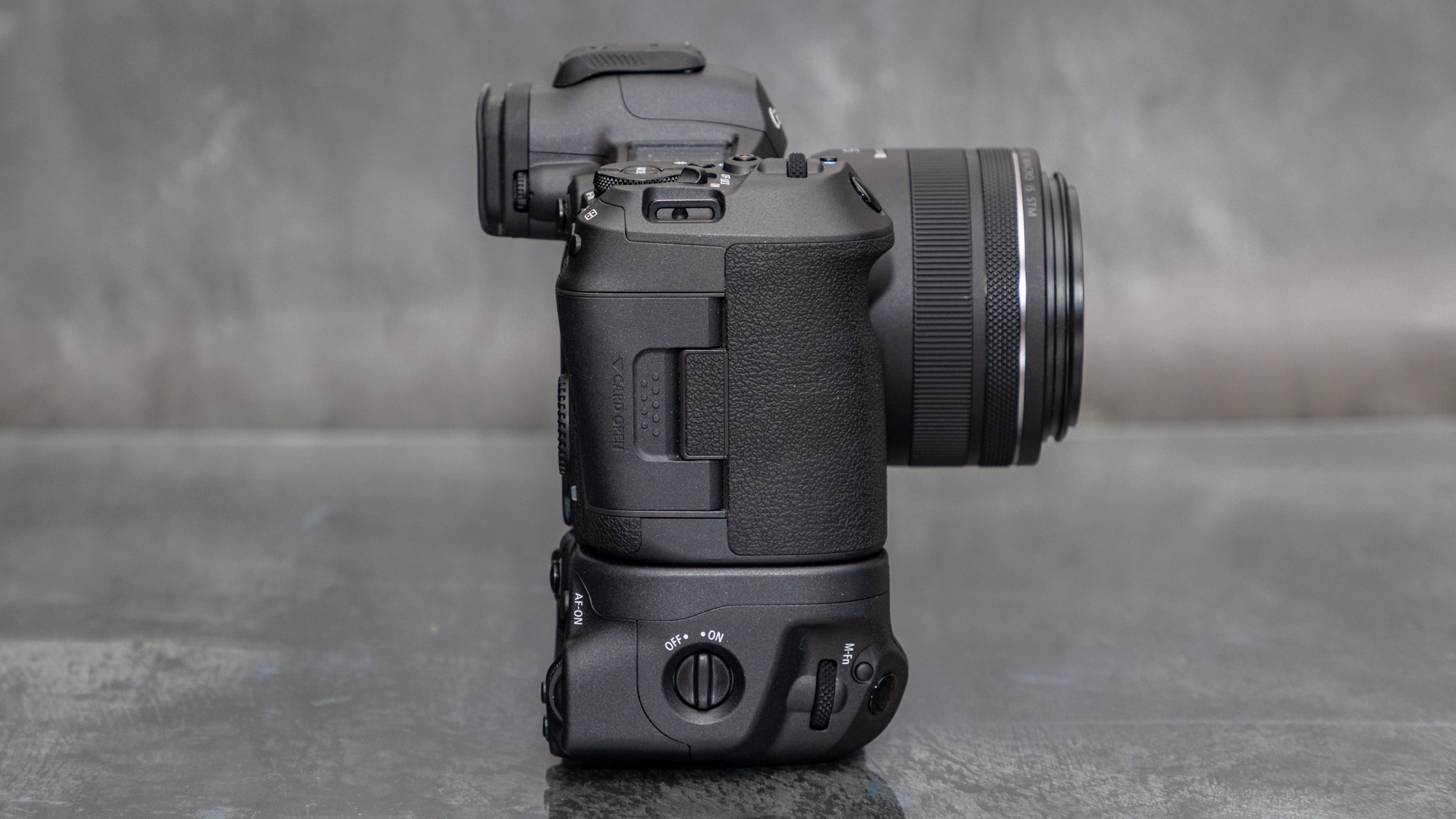
We start with the Canon BG-R20 – it's the standard and most affordable first-party battery grip available for the EOS R5 Mark II. As somebody who uses a third-party grip on the original EOS R5, this OEM grip and its EP counterpart are a cut above with excellent build quality and feels both rugged and durable in the hand. Its battery stalk also has a space to safely stash your battery door once removed for insertion so you don't lose it.
It has all of the buttons and dials you’d expect a battery grip to have to help you shoot in the portrait orientation. This includes shutter and M-Fn buttons up front around your trigger finger plus front and rear command dials to easily dial in exposure adjustments. There's also a switch to enable or disable the buttons on the grip.
On the back side of the grip there’s a big AF-ON button next to two smaller star and AF point selection buttons and a nice grippy joystick for you to reposition your active AF point, in addition to a magnify button to zoom in. Also on the back you’ll find the large thumbwheel to securely attach the grip to the EOS R5 II body. On the base you’ll find a strap loop attachment point plus a standard tripod mounting point. The battery dock cassette has a twist handle that unlocks and locks it in place, it also has a rubber weather seal around it so locking it ensures moisture won’t easily find its way inside.
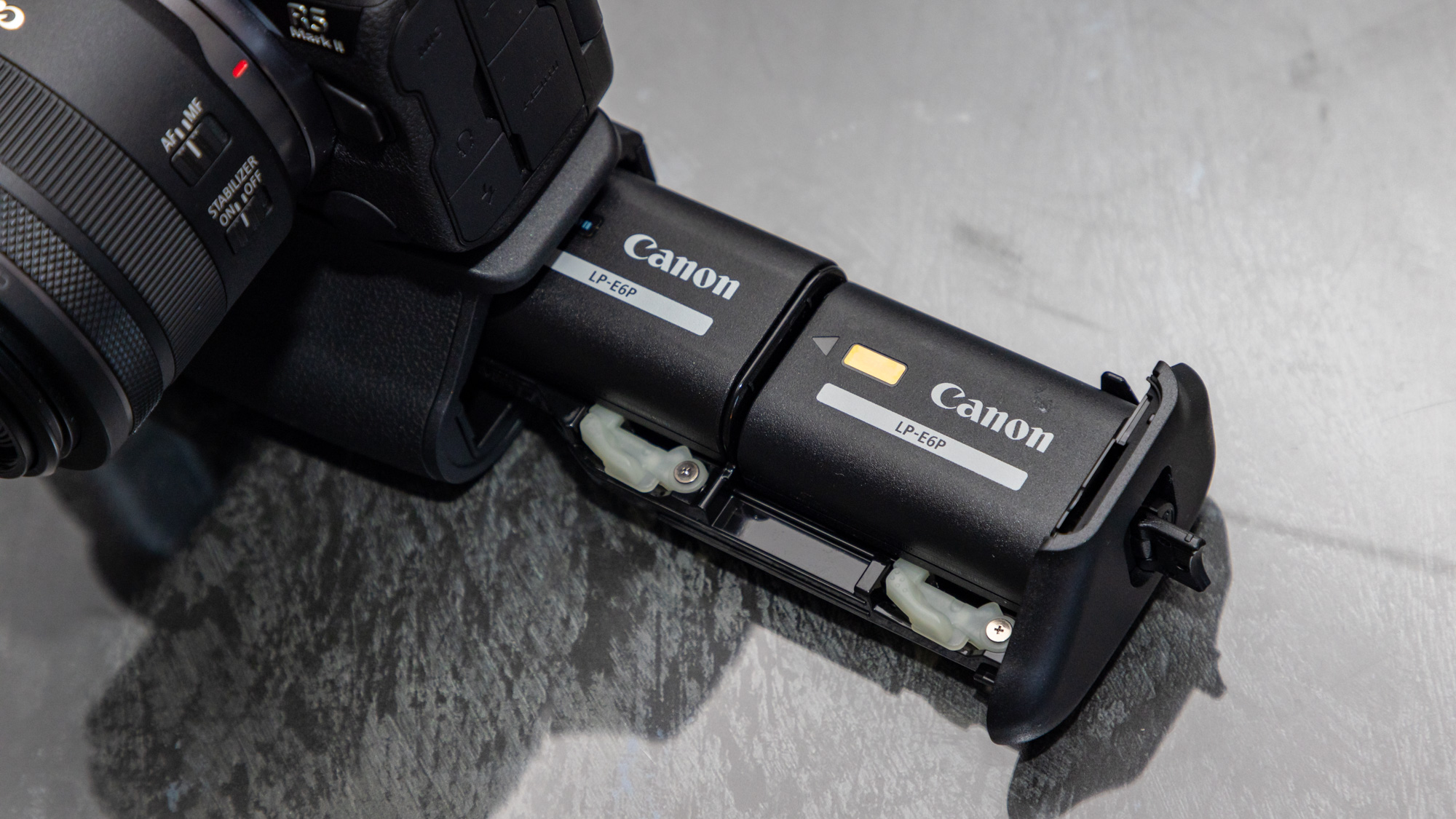
The dock is compatible with two of Canon’s beefier LP-E6-style Li-Ion batteries it’s been using on its DLSRs and mirrorless cameras for years and whilst the older LP-E6 and LP-E6N (and NH) cells will click in and power the R5 Mark II, you’ll only be able to use the full set of features if you use Canon’s latest LP-E6P batteries as it has a maximum discharge of 6 Amps, enabling the more power-hungry features such as Pre-Capture as well as 8K and RAW video recording. It also doesn't appear to like mismatched batteries, so you need to use a pair of LP-E6P, LP-E6N, LP-E6NH batteries, preferably two LP-E6P bats for the whole suite of features, otherwise the R5 Mark II flags up an error and can't be used.
Canon BG-R20EP
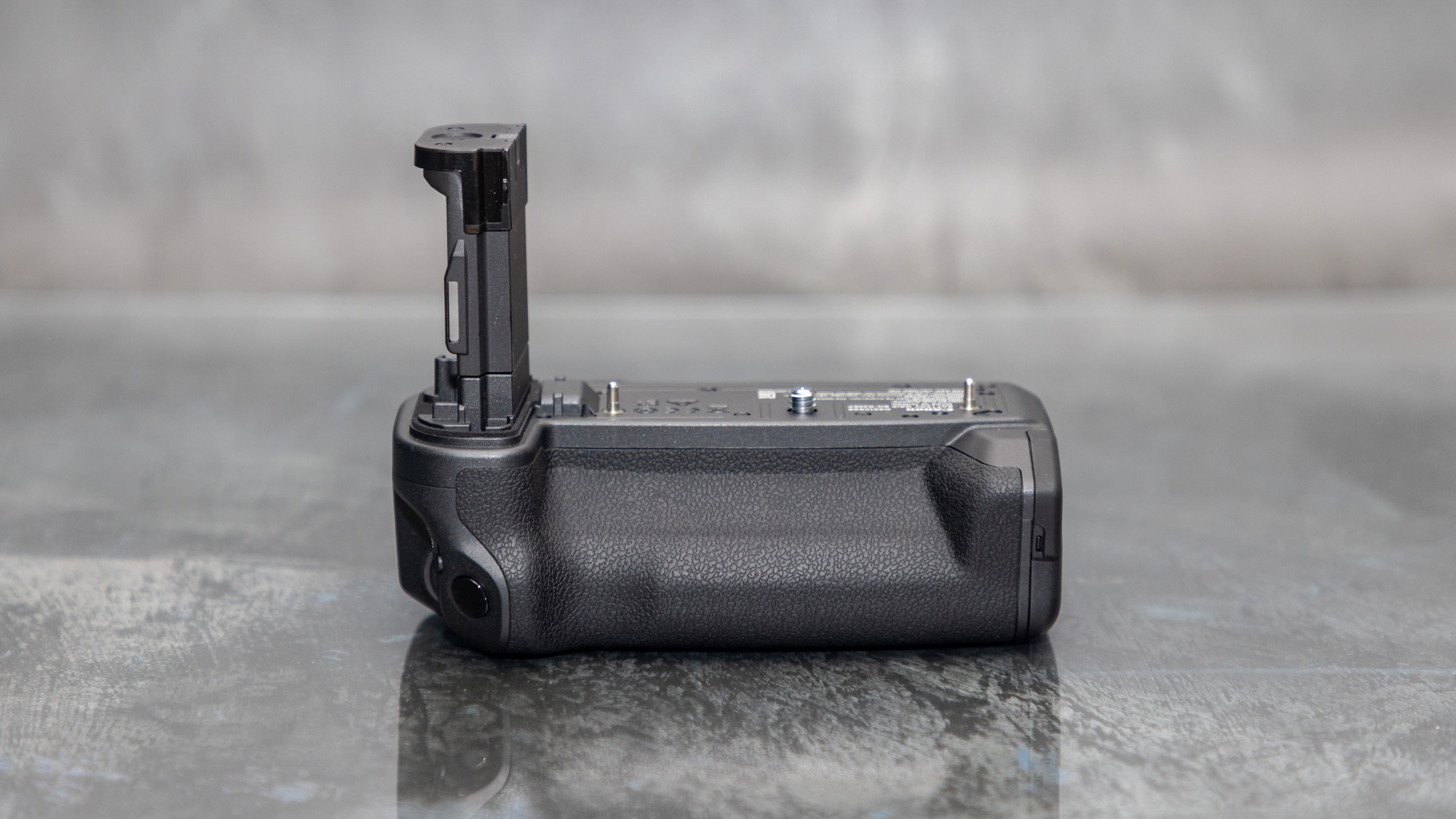
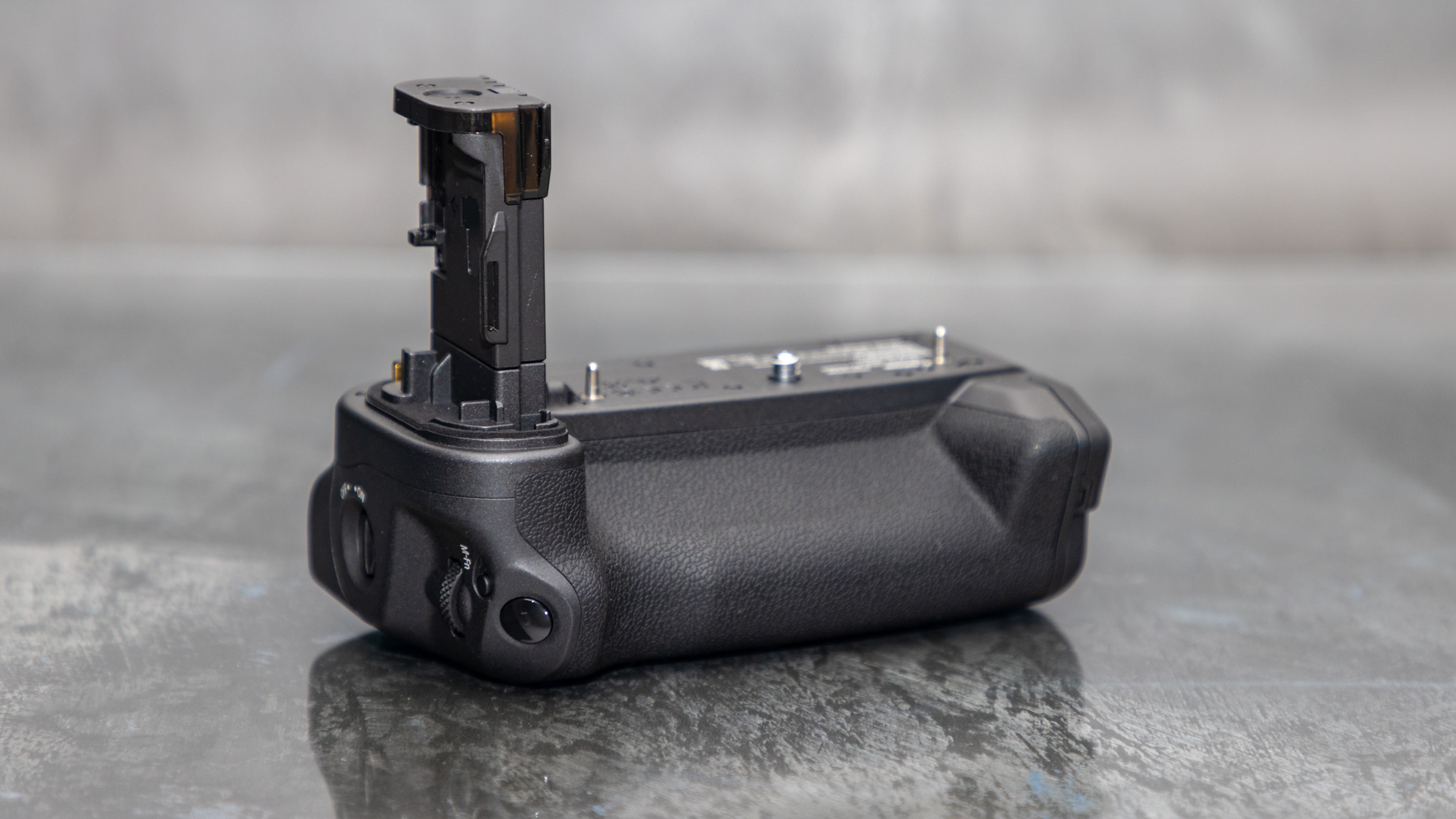
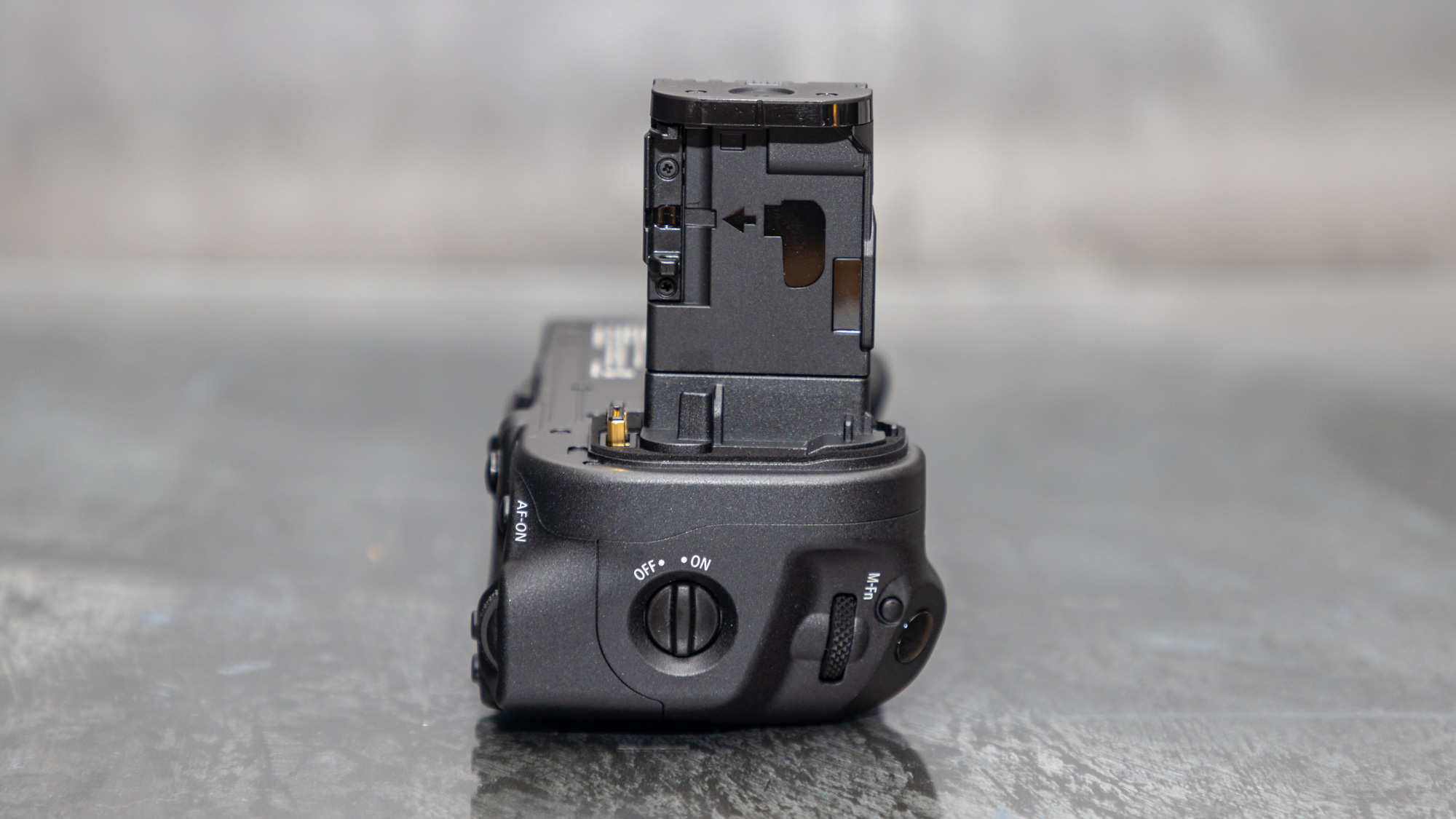
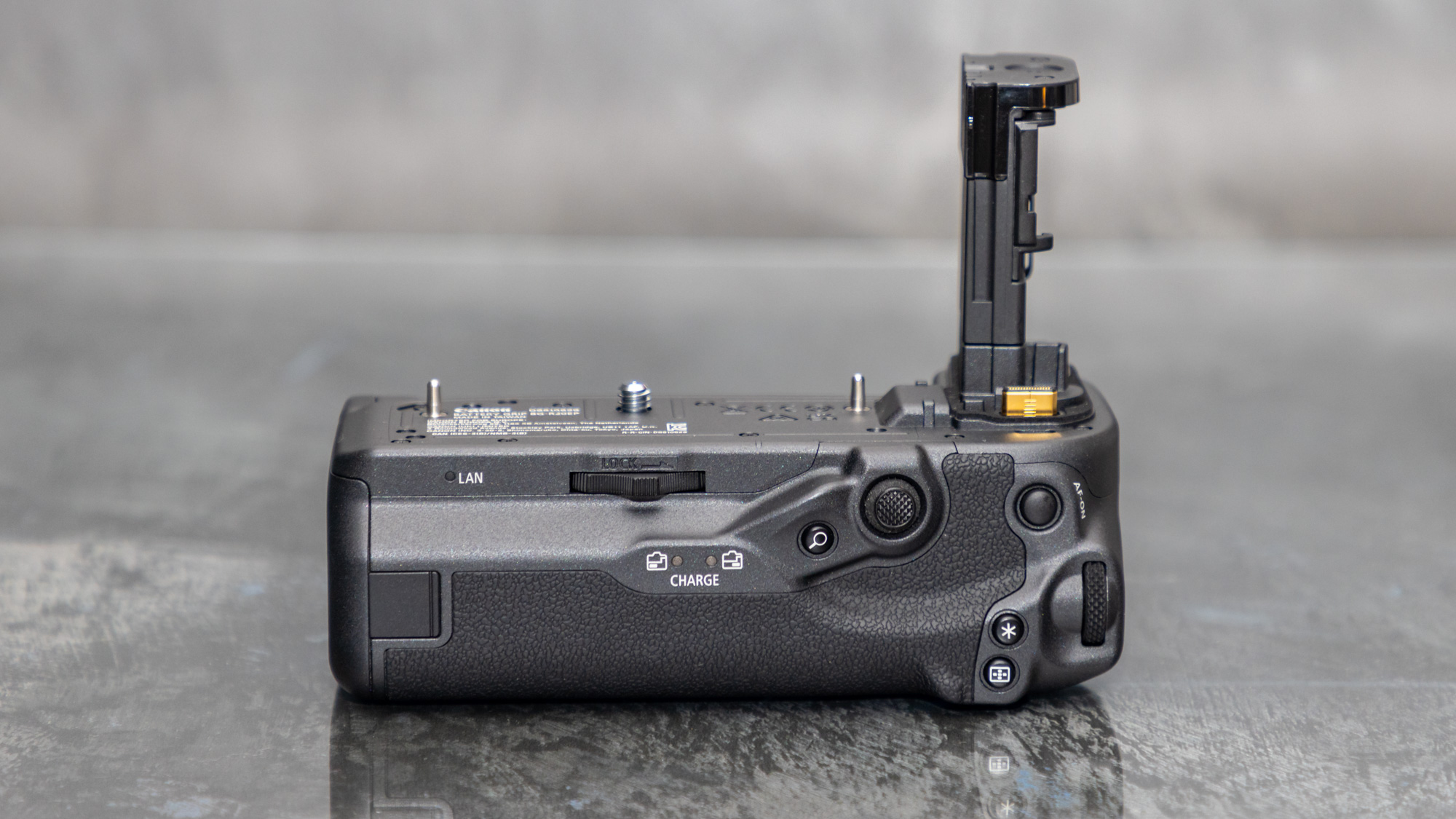
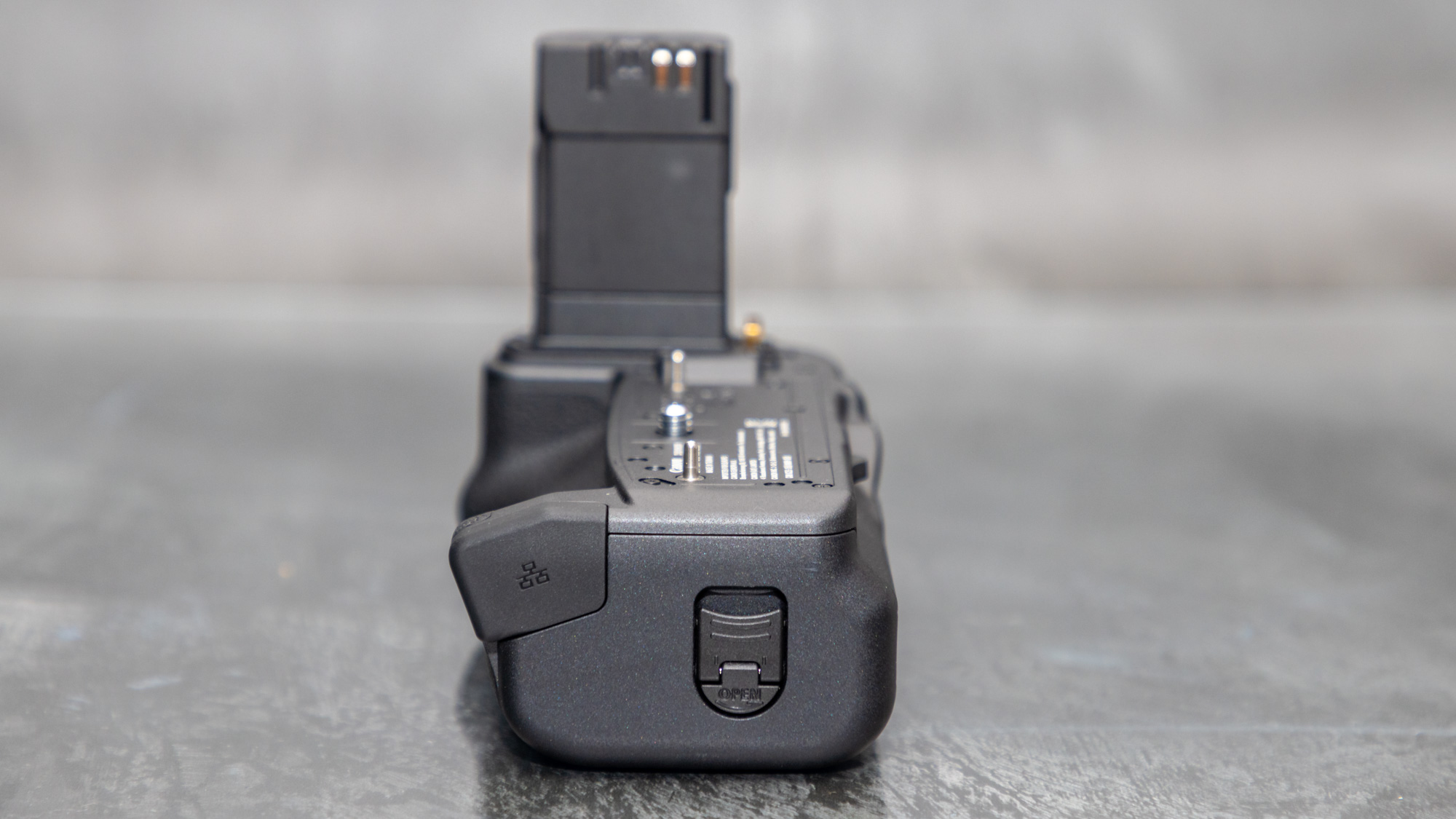
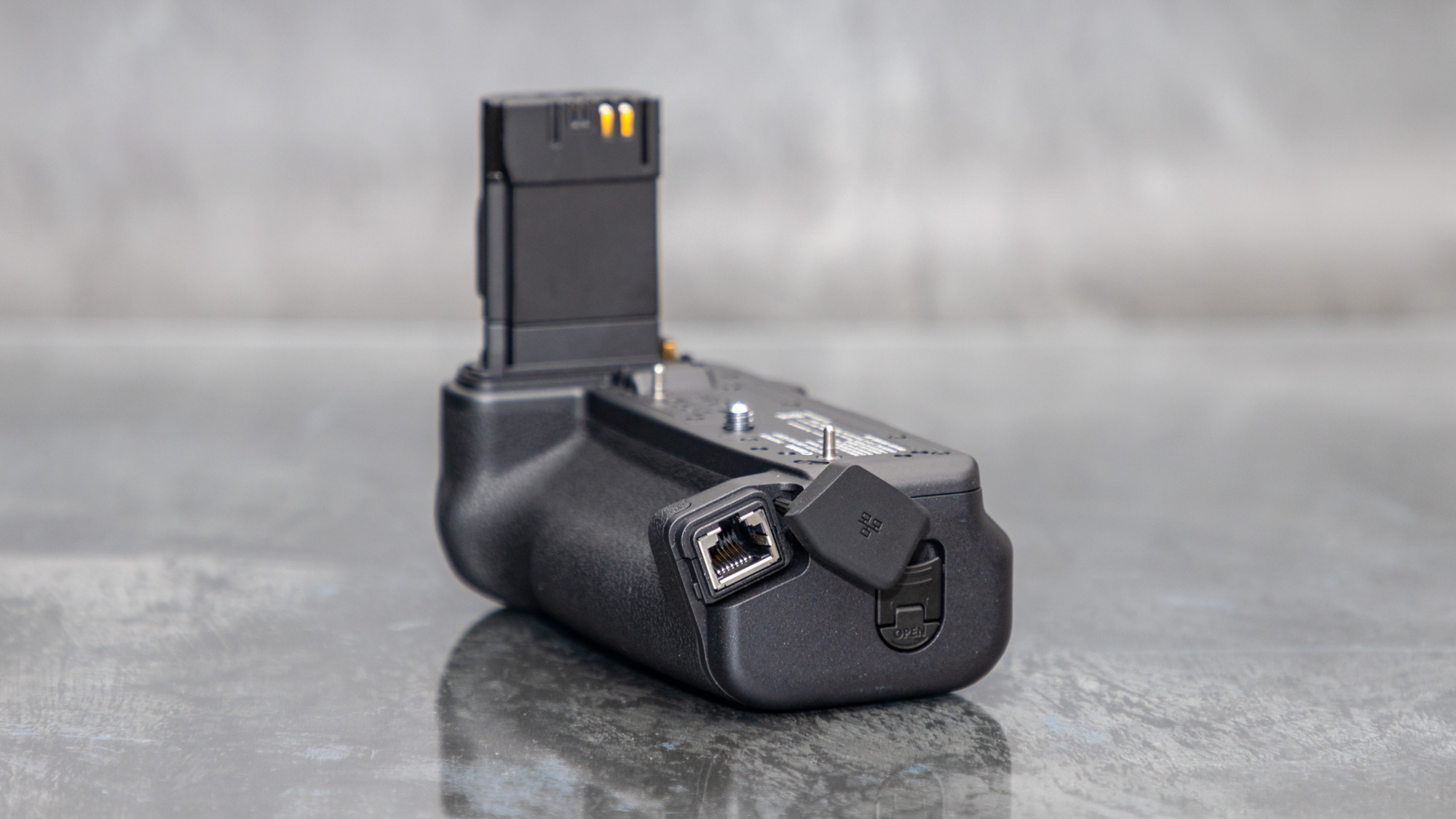
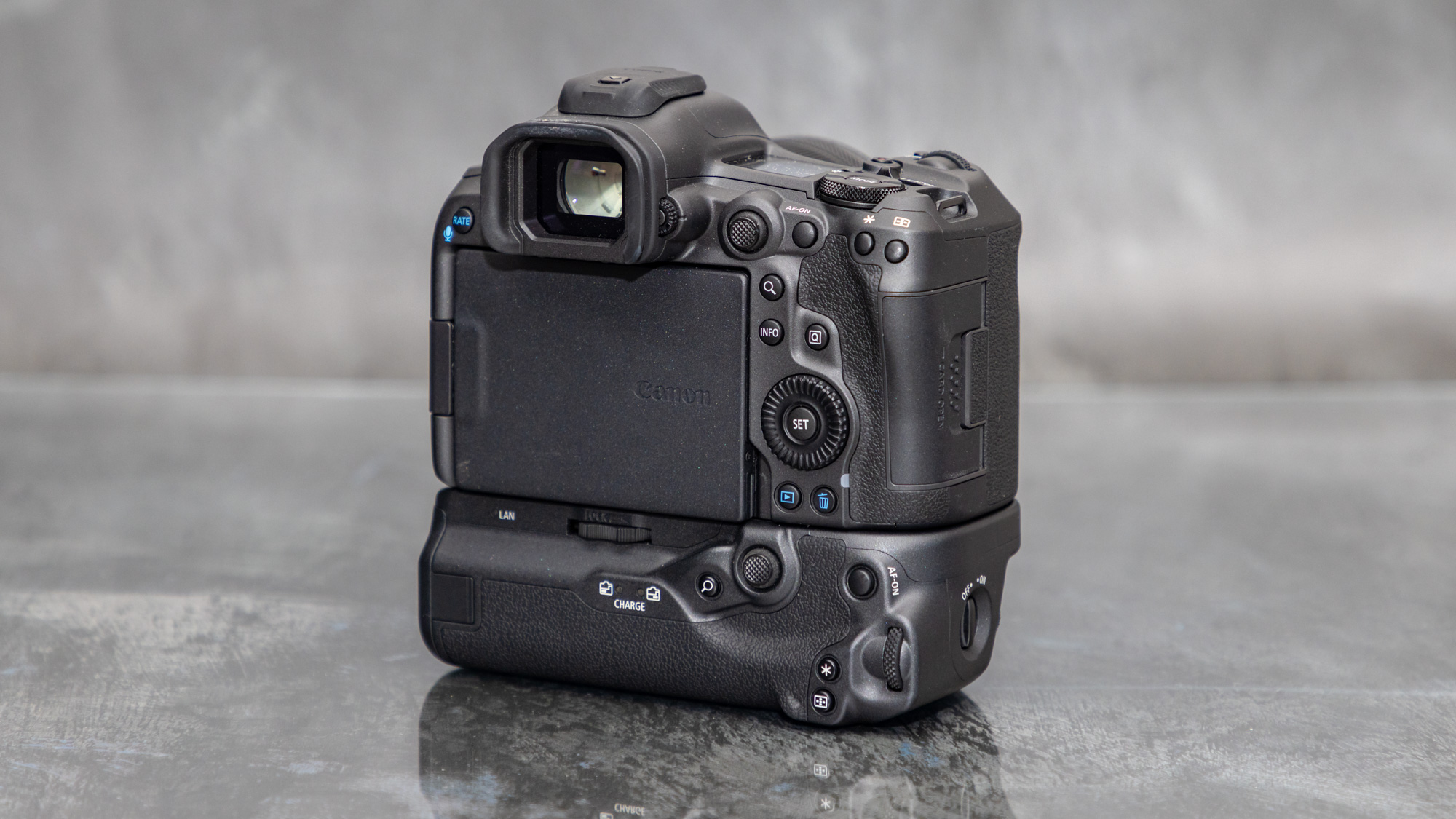
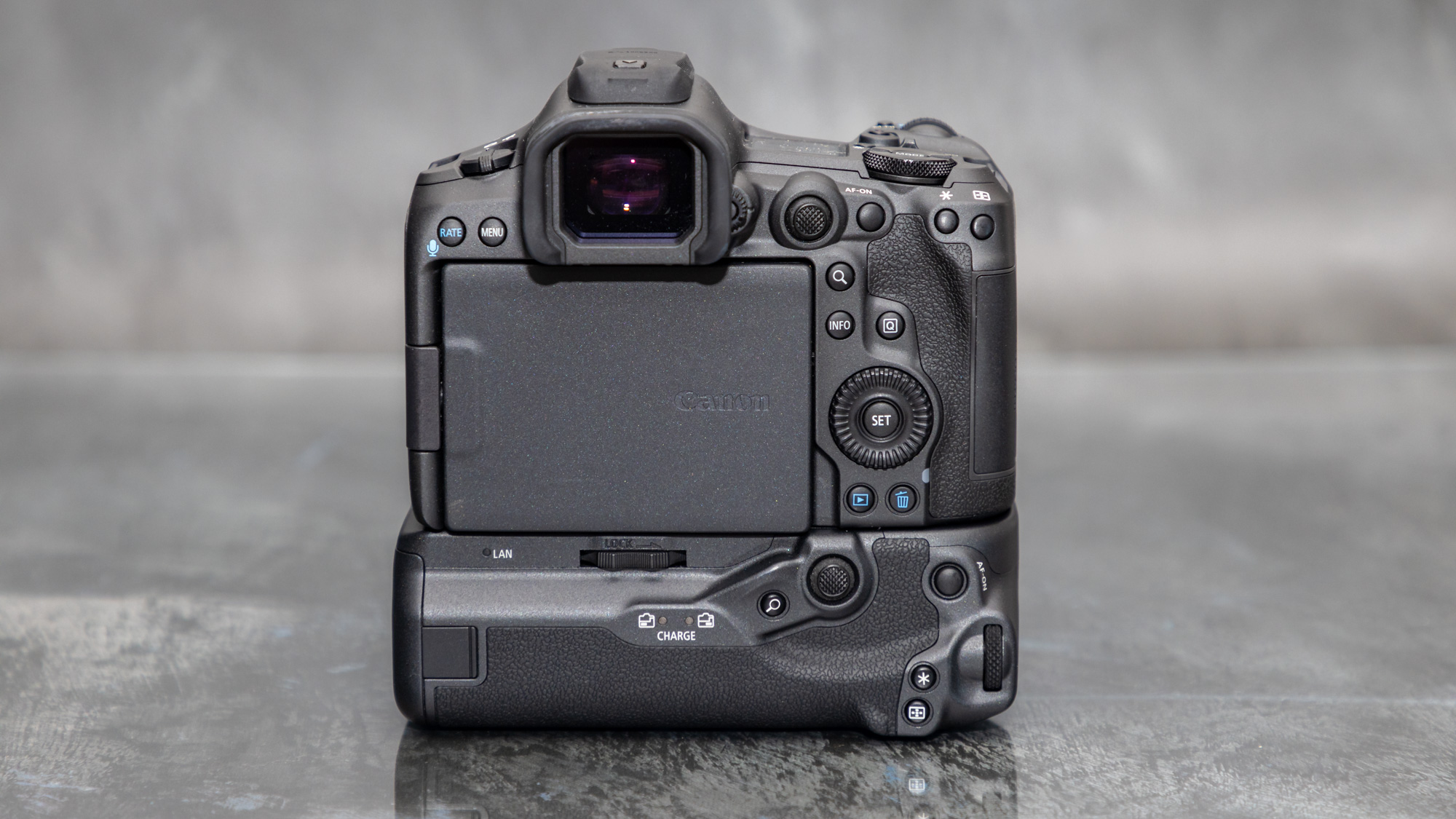
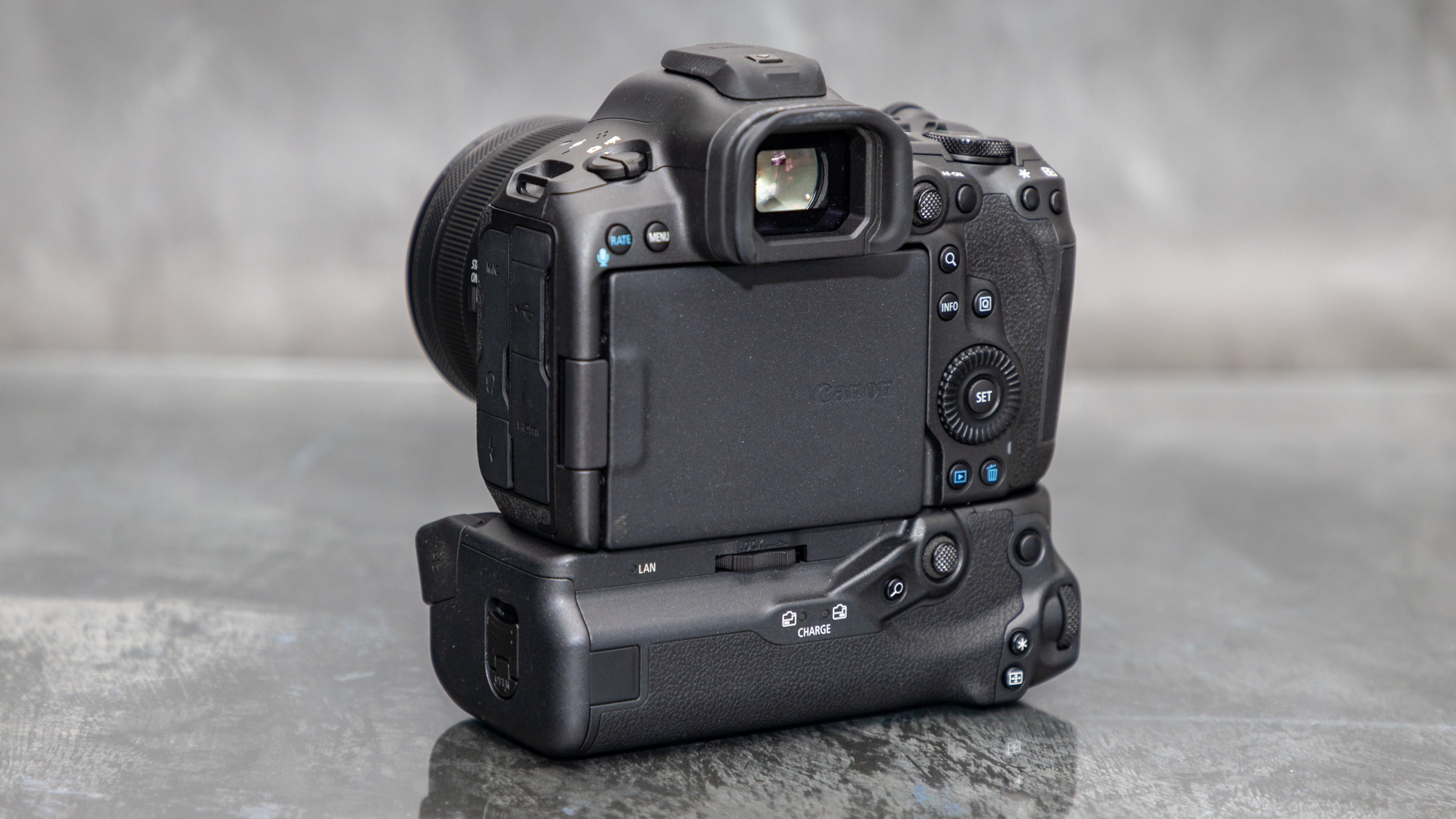
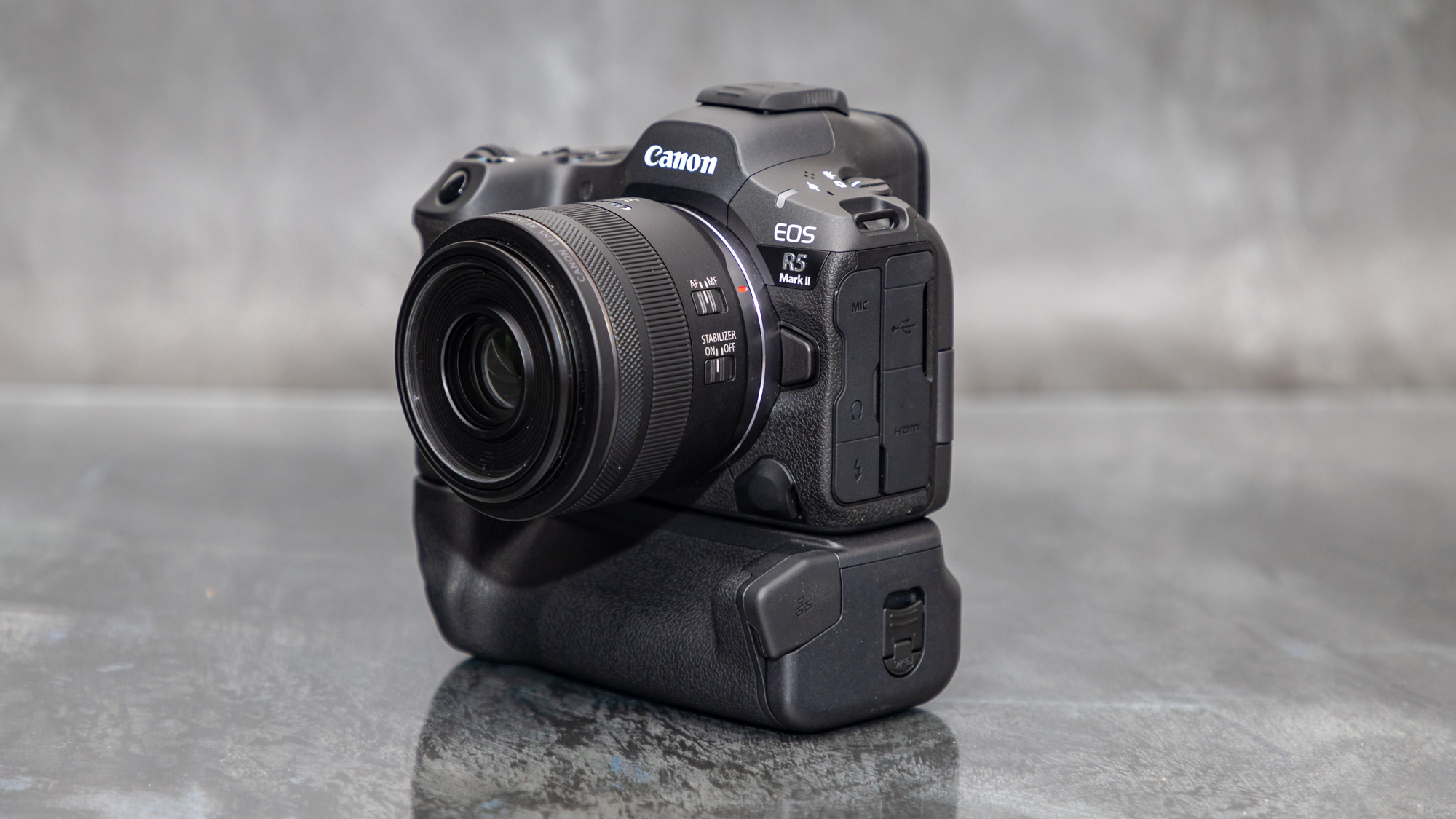

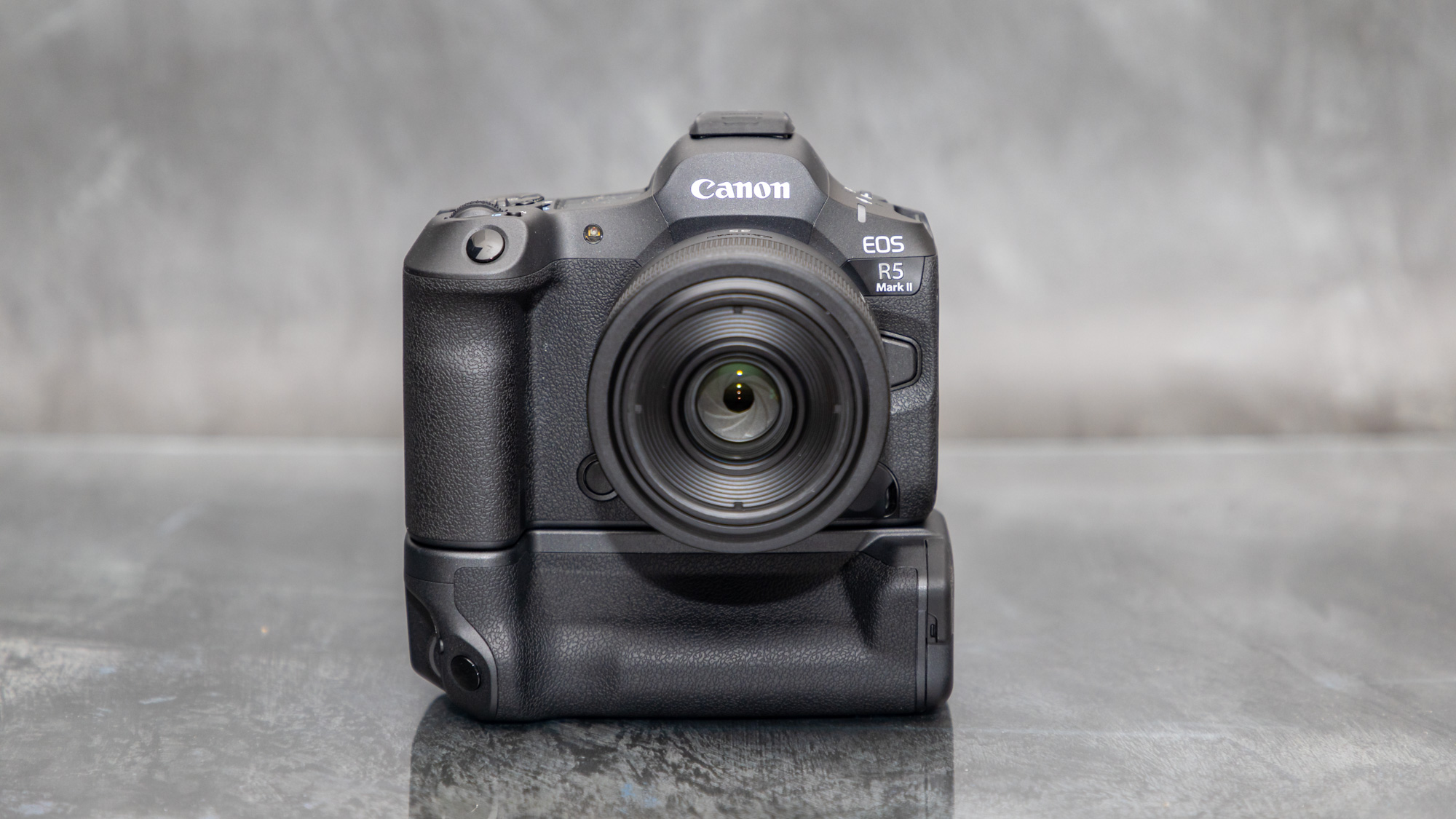
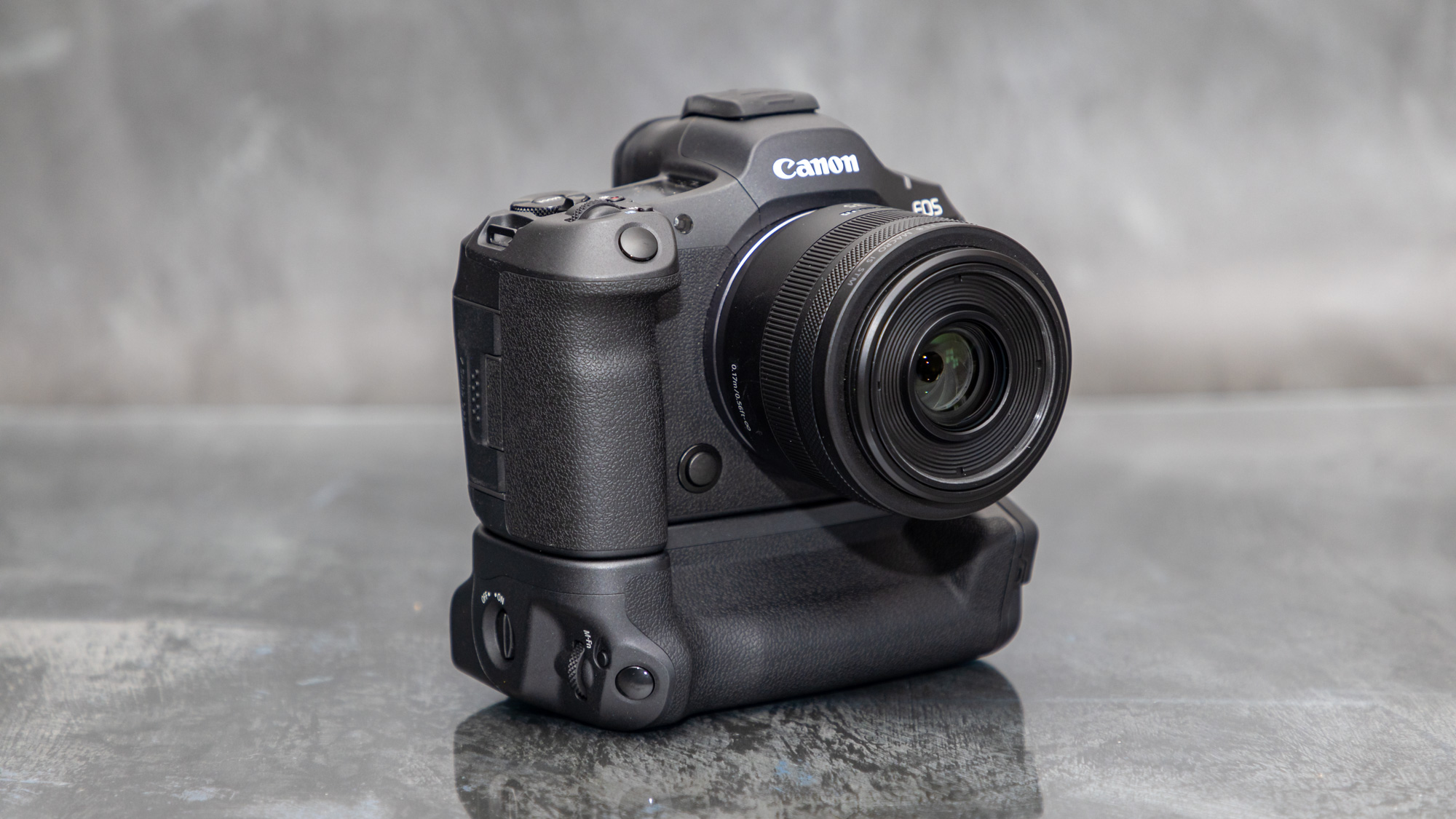
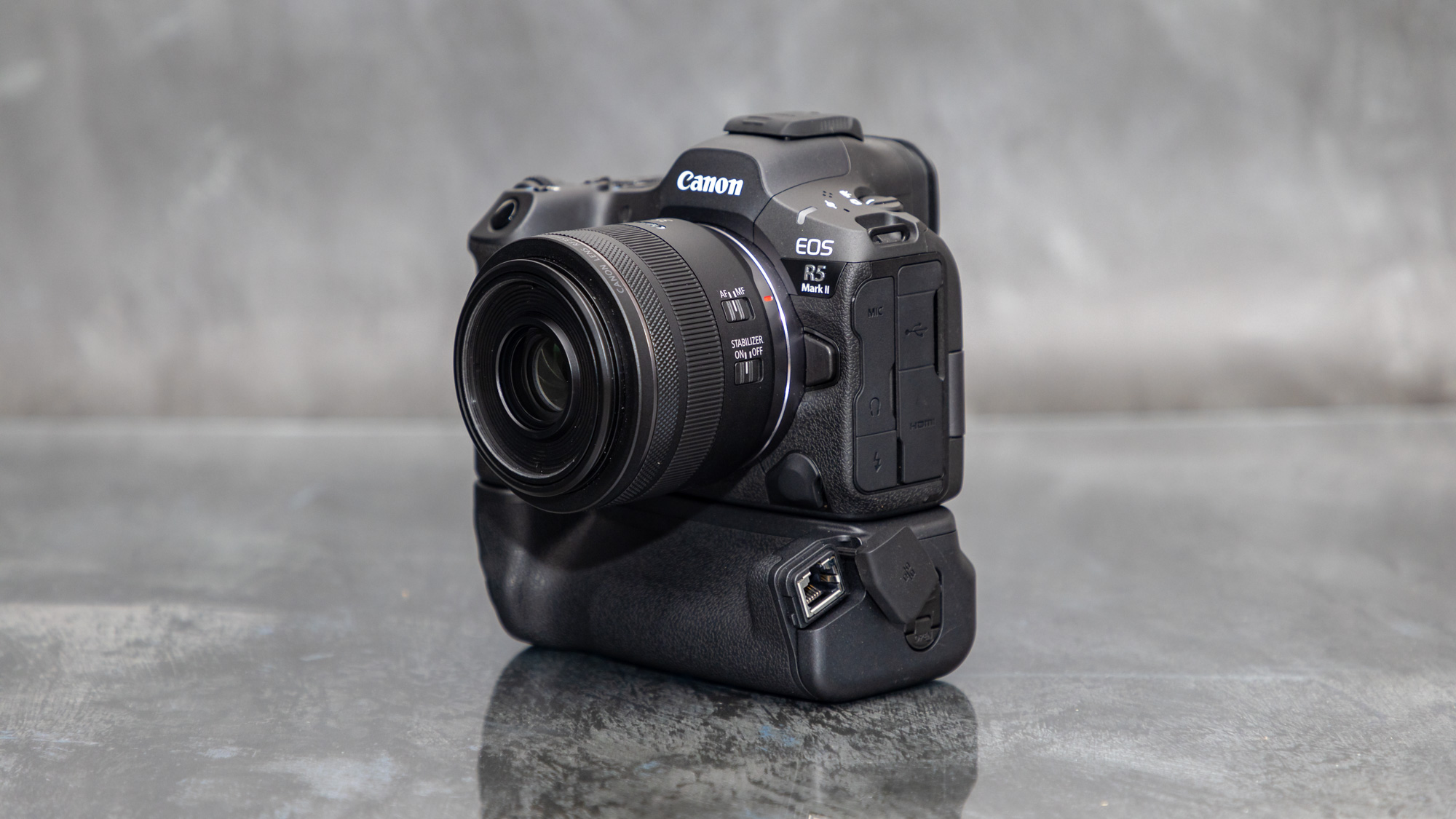
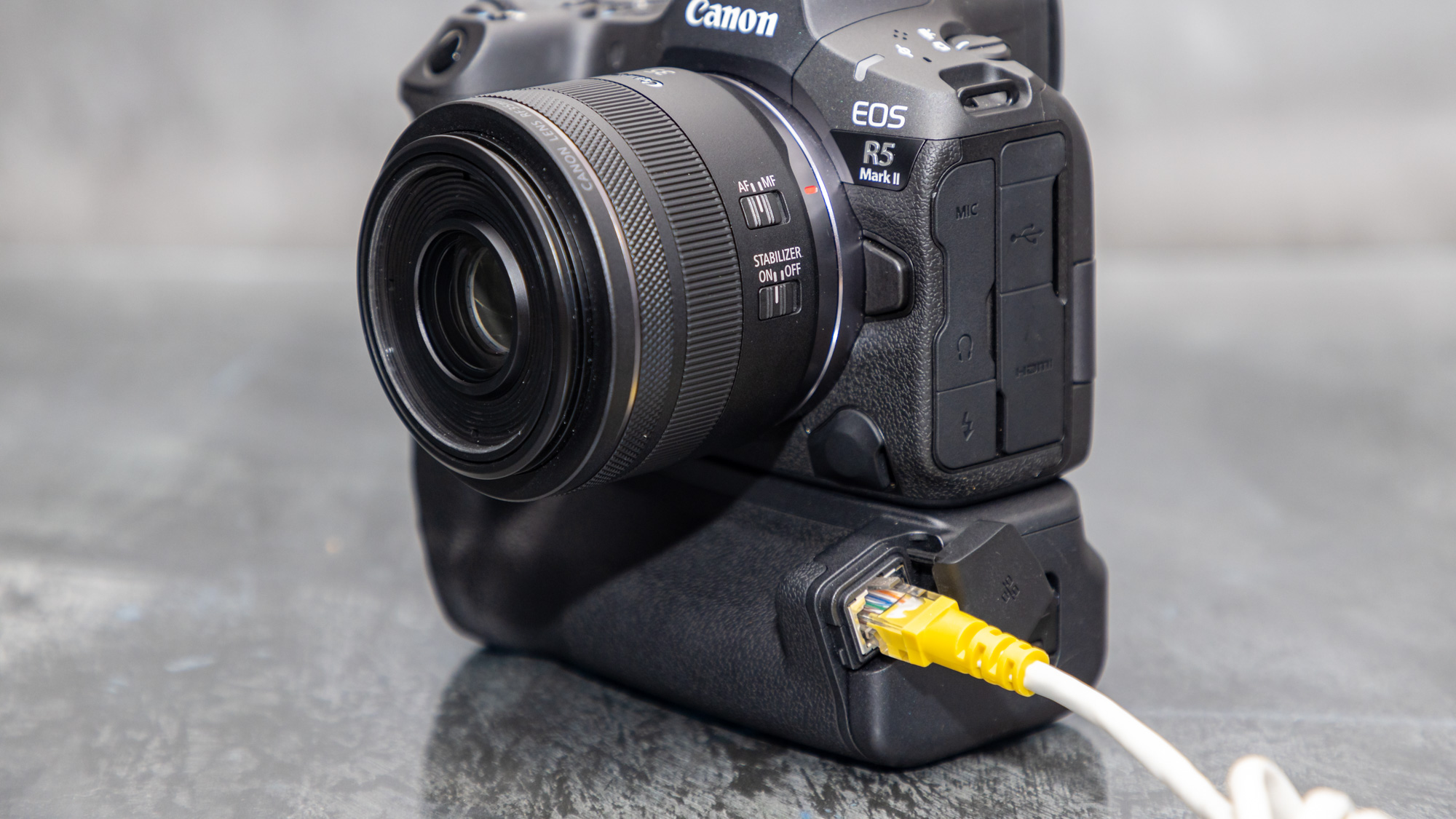
The Canon BG-R20EP is very much a similar beast to the more affordable Canon BG-R20, though goes on to include an Ethernet port for 2.5Gbps transfer speeds to FTPs. This takes the form of small nub at the bottom of the hand grip, and although it takes up some of the real estate on the front grip section I never found it to get in the way. The port also has a rubber cover which clicks nicely into place when shut to keep the elements out.
One strange quirk I did notice with the Canon BG-R20EP is it has an additional piece of rubber on the battery dock cassette to keep one of the batteries secure, though I found this a bit of a faff and would usually catch when trying to insert the battery cassette back into the grip, so I found it to be more annoying than helpful. Strangely, this isn't on the standard Canon BG-R20.
Something worth noting for both the Canon BG-R20EP and more affordable Canon BG-R20 is that they both cover the vent holes on the underside of the EOS R5 Mark II so this is potentially blocking the flow of air to passively cool the sensor, though I didn't see big discrepancies between either of the grips being attached compared to the baseline without.
Canon CF-R20EP
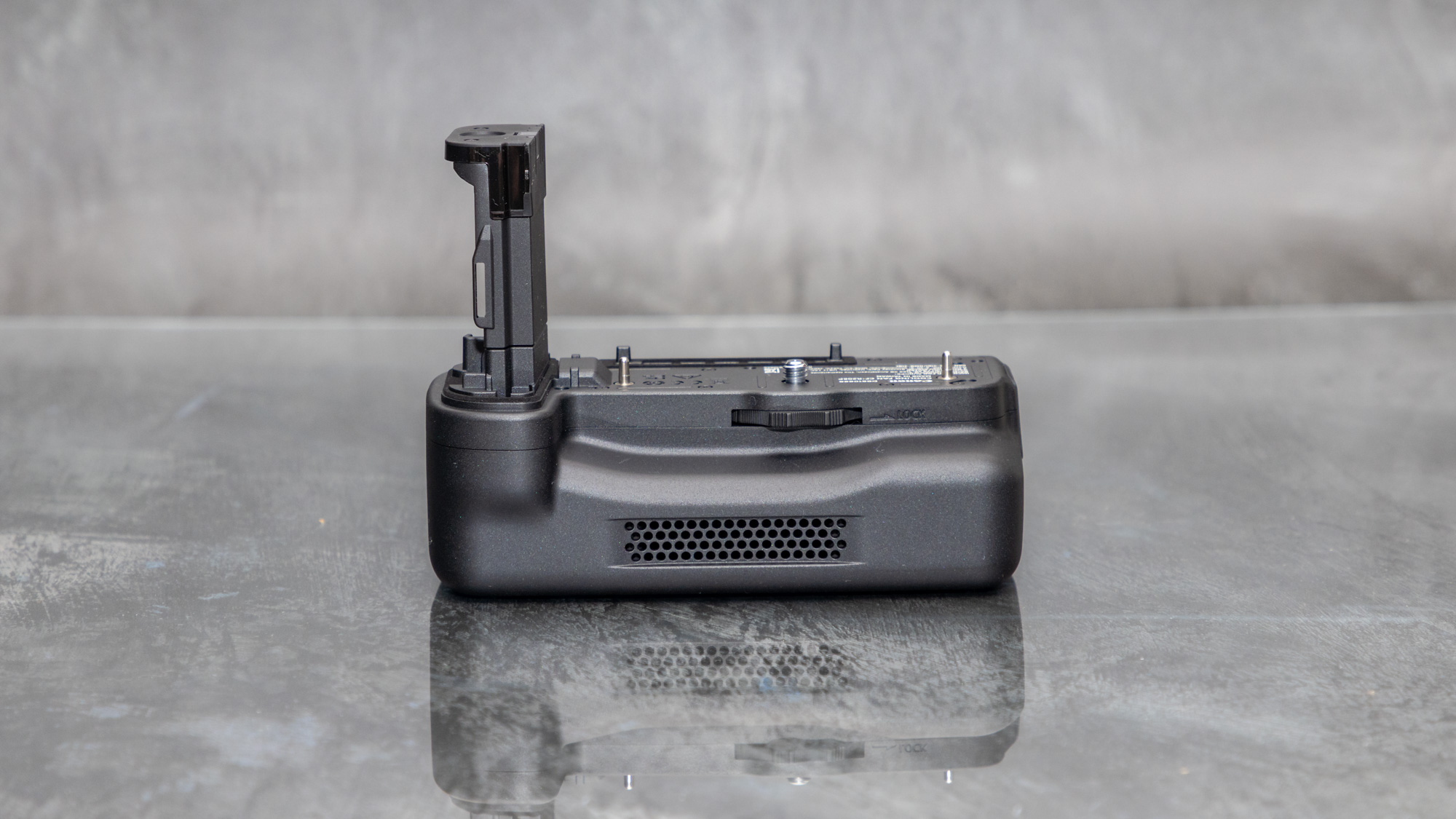
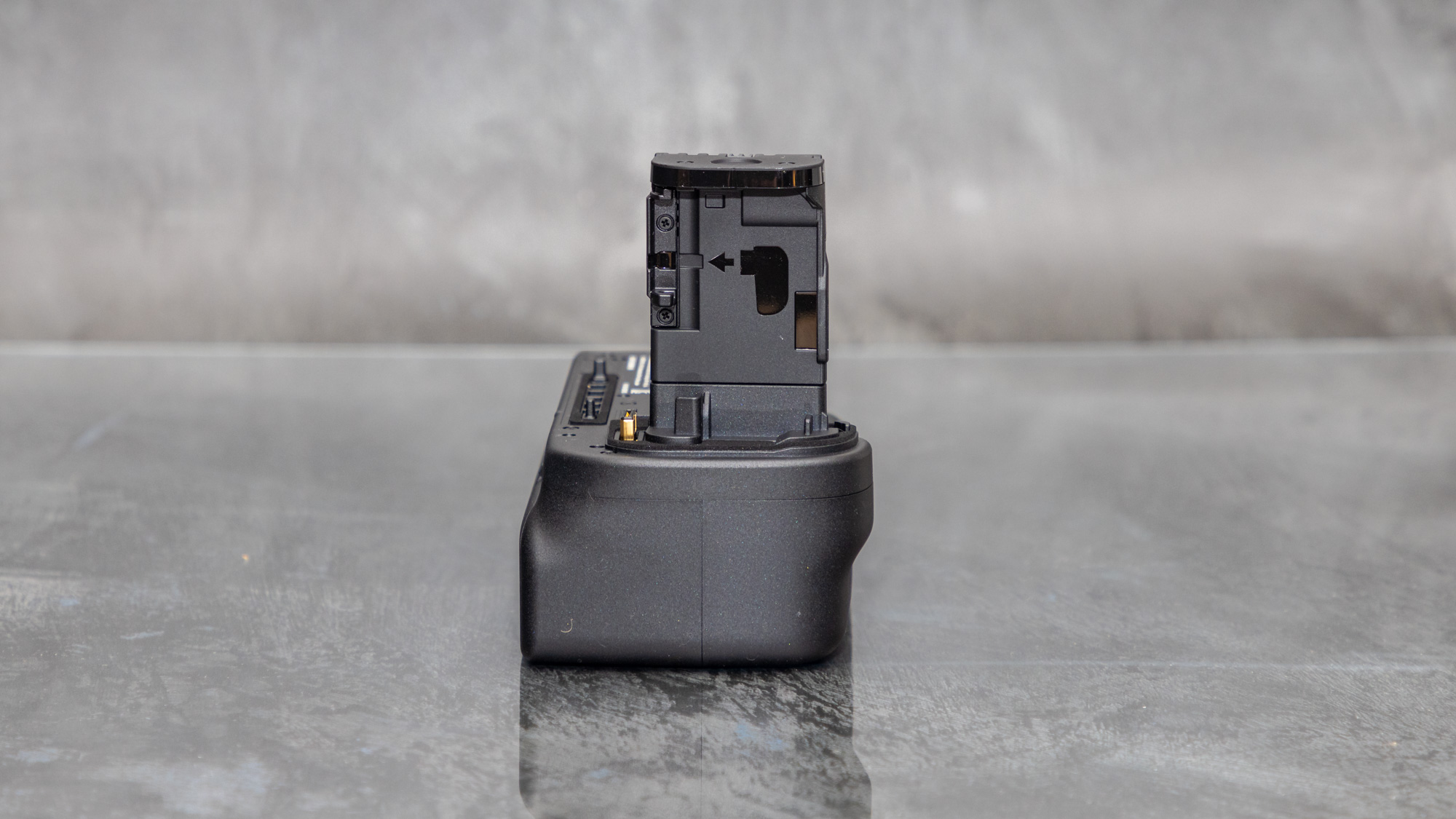
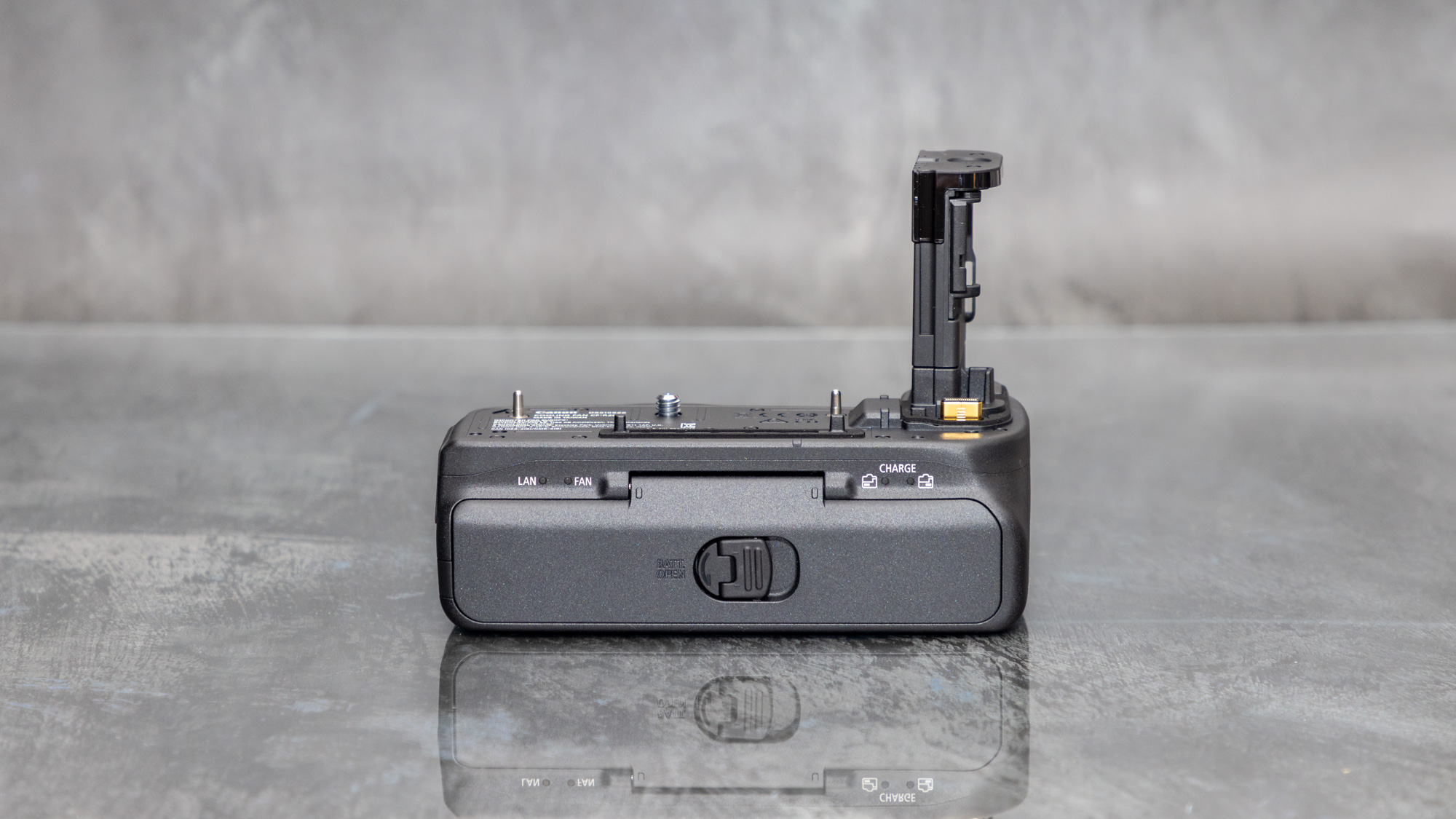
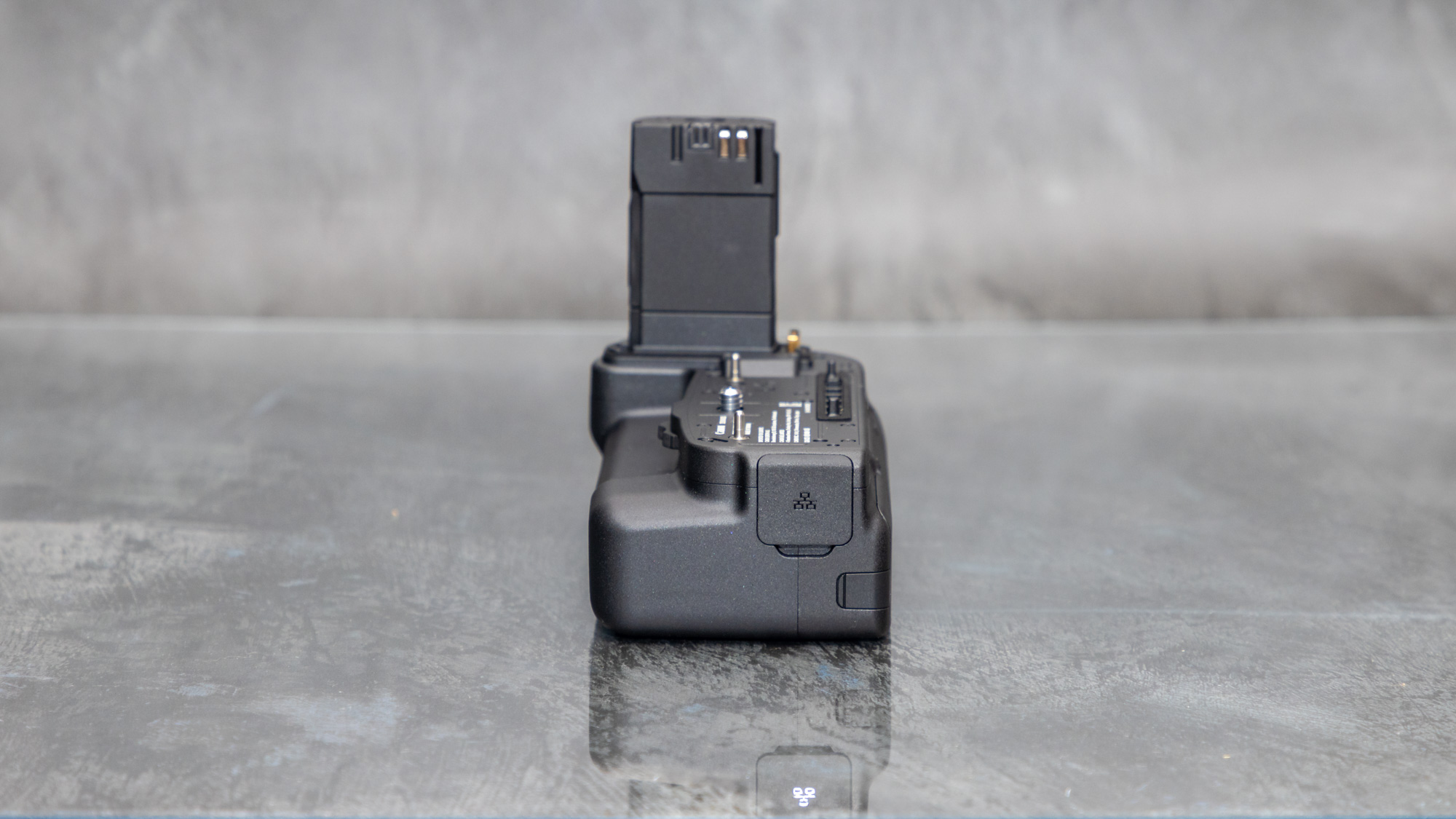
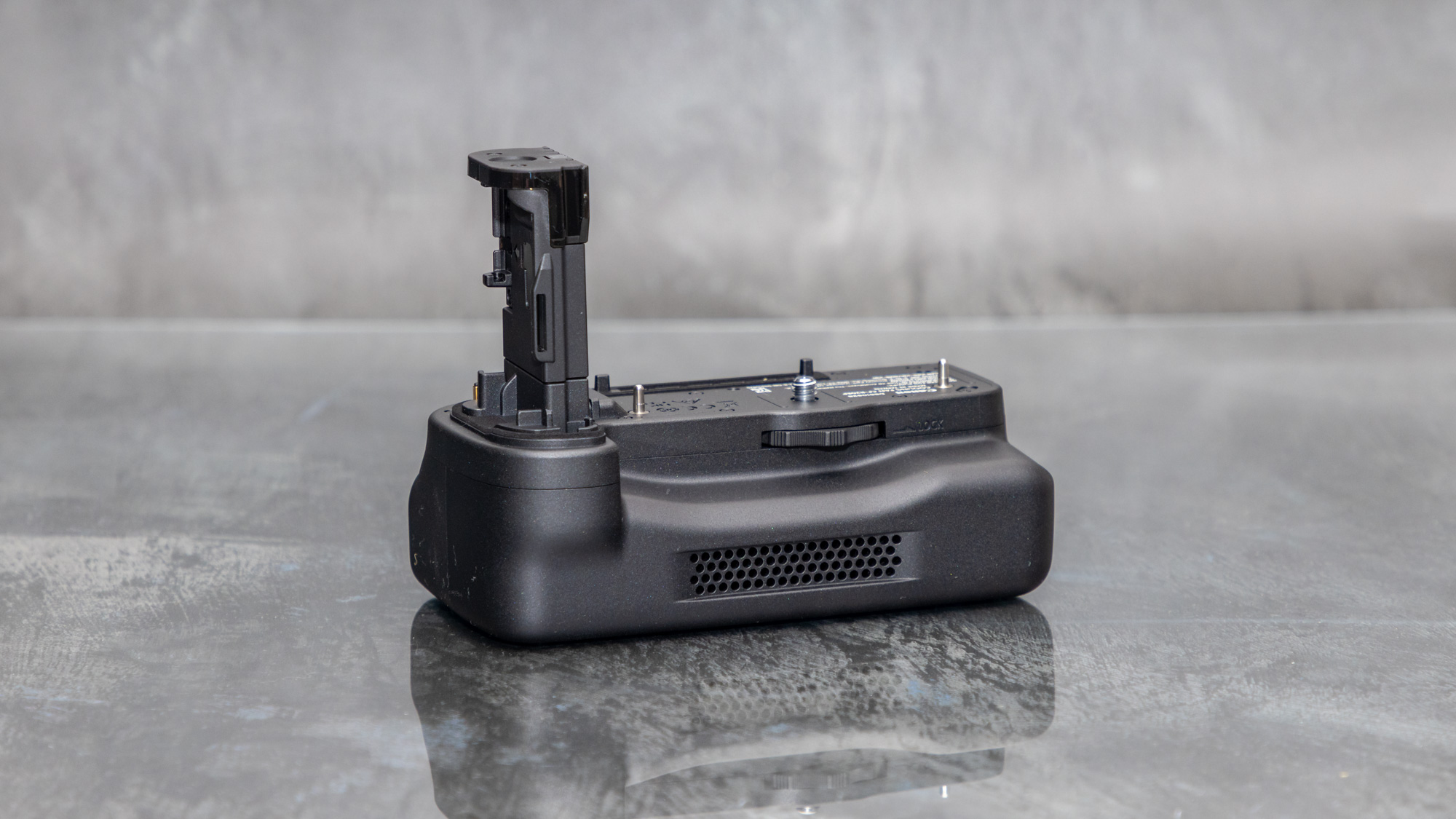
The Mark I version of Canon’s EOS R5 range was subject to a fair bit of flack due to overheating when recording 4K video. It looks like Canon has made damn sure it doesn’t face the same criticisms with the Mark II iteration though, as not only is the R5 Mark II more efficient straight out of the gate with ventilation holes between the sensor and LCD screen, it also has a new optional Canon CF-R20EP cooling fan battery grip for additional 'active' cooling.
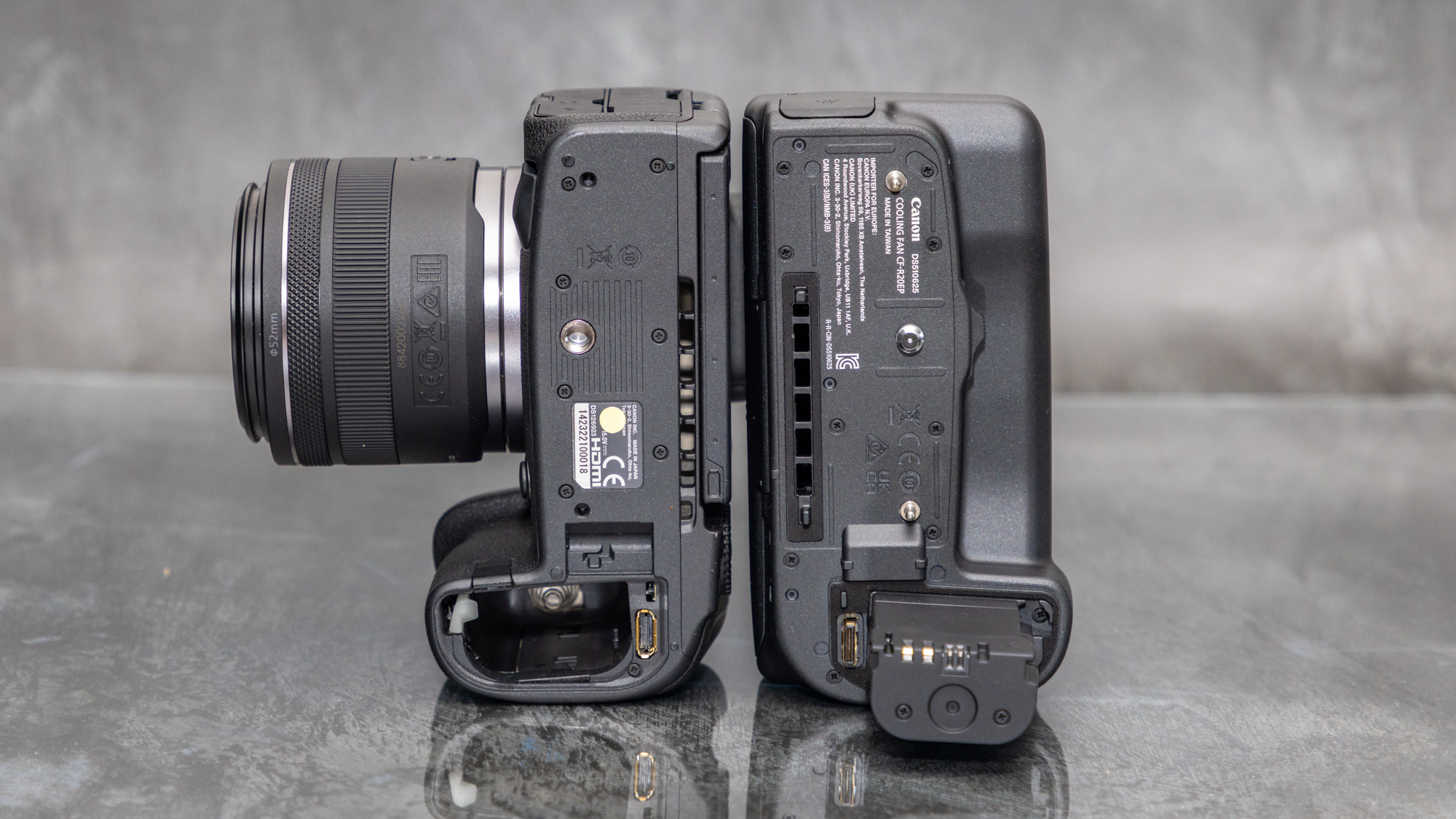
The Canon EOS R5 Mark II features several air channels behind the LCD screen which run from the bottom of the camera through to the left side next to the USB-C and HDMI ports. With the Canon CF-R20EP in place, air can be blasted through these vents to extend video recording times.
To change the fan speed you have to dive into the Canon menu. This is a bit of a shortcoming as the menu cannot be accessed when you’re in the middle of recording video – a physical switch of dial on the grip body would have been really useful to change the fan speed on the fly. Once in the menu you have the option for Off, Low, Medium and High. There’s also an Auto ON feature.

Some of the R5 Mark II's more power intense features, including recording 8K video and Pre-Capture for stills will raise the internal temperature and you can turn on a thermometer to appear to warn you when it's getting hot (above)

If the internal temperature gets too high the EOS R5 Mark II will show the above warning and shut off until it has cooled. There is a Standard and High setting, where High will eek out a little more performance out of your R5 Mark II before it shuts down, though be warned – your camera will get very toasty!
It’s worth noting that this is not your regular battery grip for stills photos – there’s no buttons, dials or joystick on the back to help you shoot in the portrait orientation, for that you’ll need either the BG-R20 of BG-R20EP. In fact, the front part of the grip where you’d usually place your hand on the battery grip is the fan air intake so you definitely don’t want to be obstructing this with your hand. Another notable quirk is that unlike the BG-R20 and BG-R20EP grips it doesn’t have a strap anchoring attachment point on the underside.
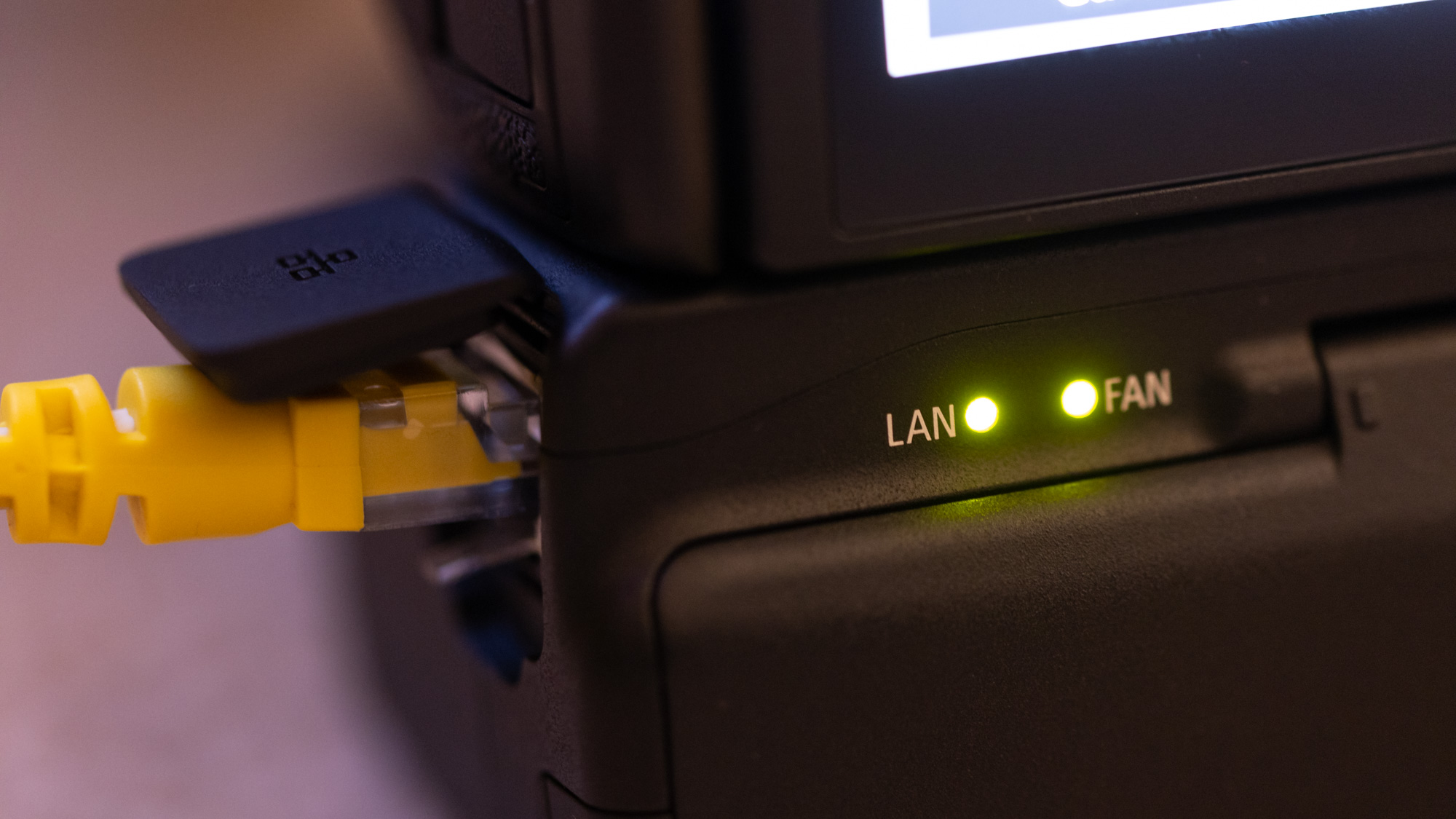
What this grip does have however, is an Ethernet port. This makes total sense, as if you need this battery grip to record extended video content then you’re going to have some big files to shift and doing so over Ethernet makes it easy to upload to an FTP.
The grip is a considerable size so one might think that the fan would take up a large percentage of its footprint, however, when you realise that two full LP-E6P batteries need to fit inside this grip, that only leaves about a third of the space for the fan. That doesn't seem to particularly matter though, as it's clearly powerful enough to do the job and extend the recording times appropriately. Looking through the front air intake I could just about make out the fan and it’s somewhere in the region of 3-4cm wide by my estimation. It is a shame a larger fan couldn’t be used as this could push even more air through at lower RPMs and would make it quieter and more efficient.
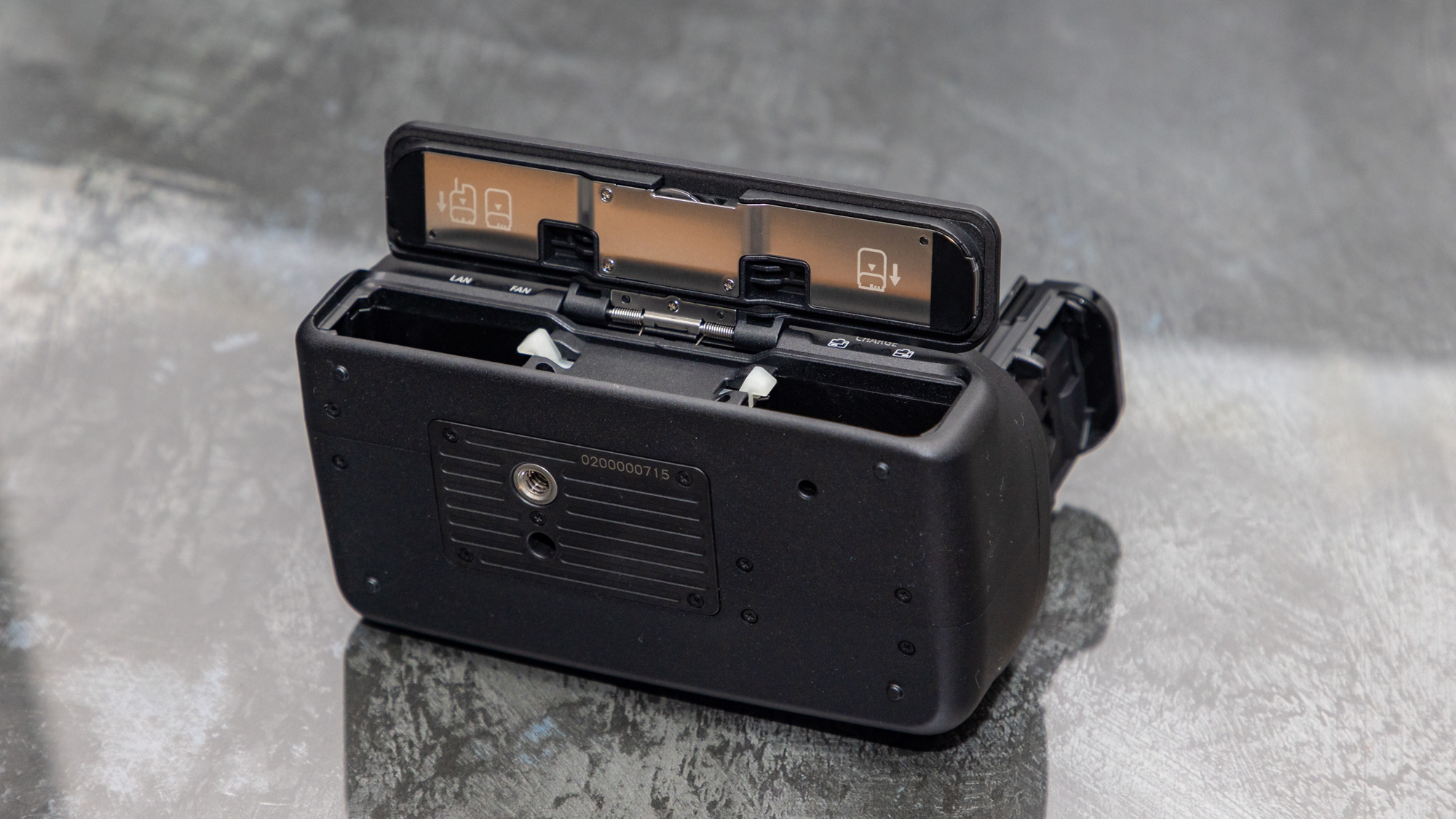
Unlike the Canon BG-R20 and Canon BG-R20EP which have a rock-solid weather-sealed build, I do question how the Canon CF-R20EP will perform in a heavy downpour as by its nature it’s not fully weather sealed – there's large holes around the air intake on the front so it's not unrealistic to foresee water could find its way inside.
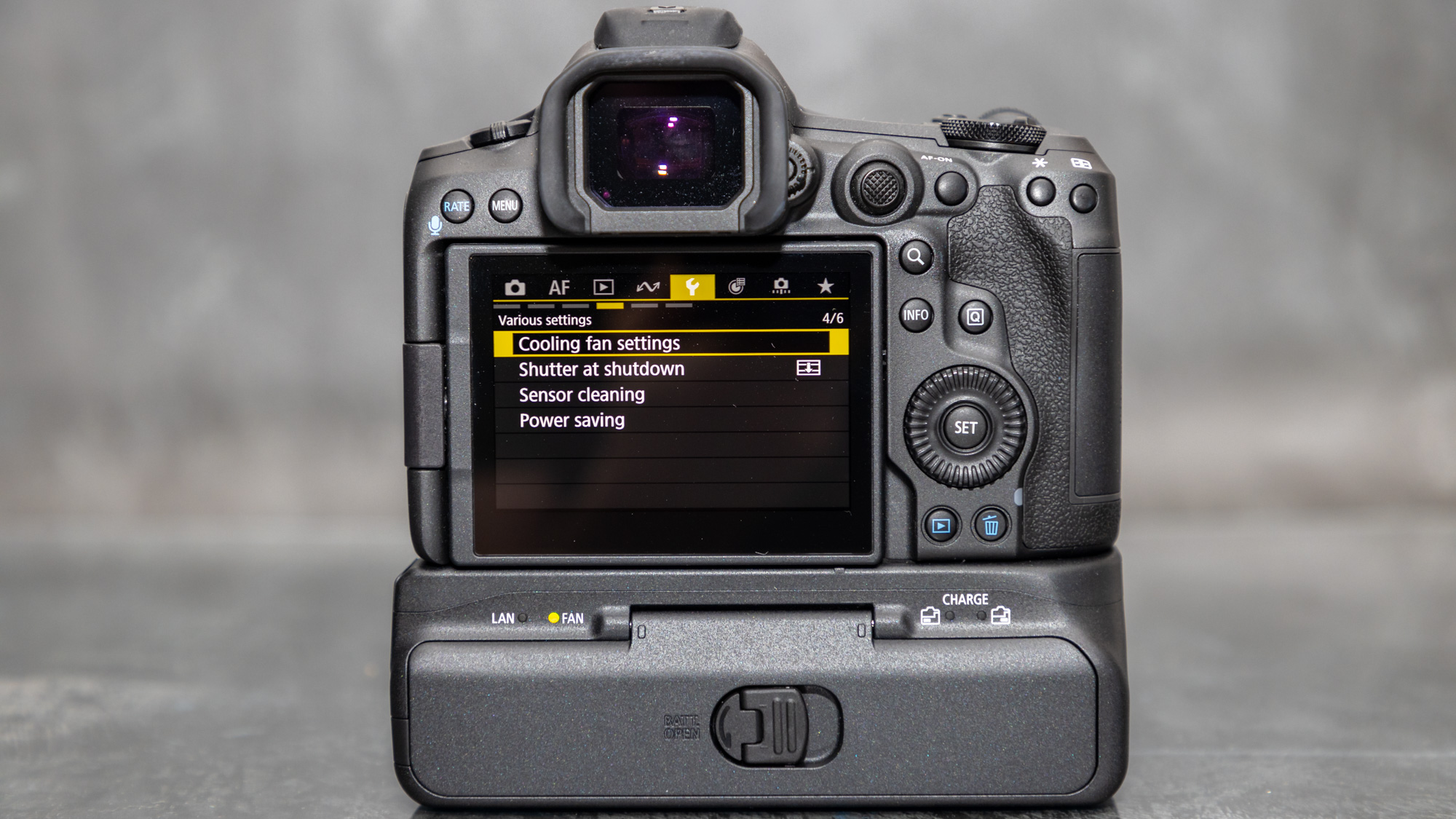
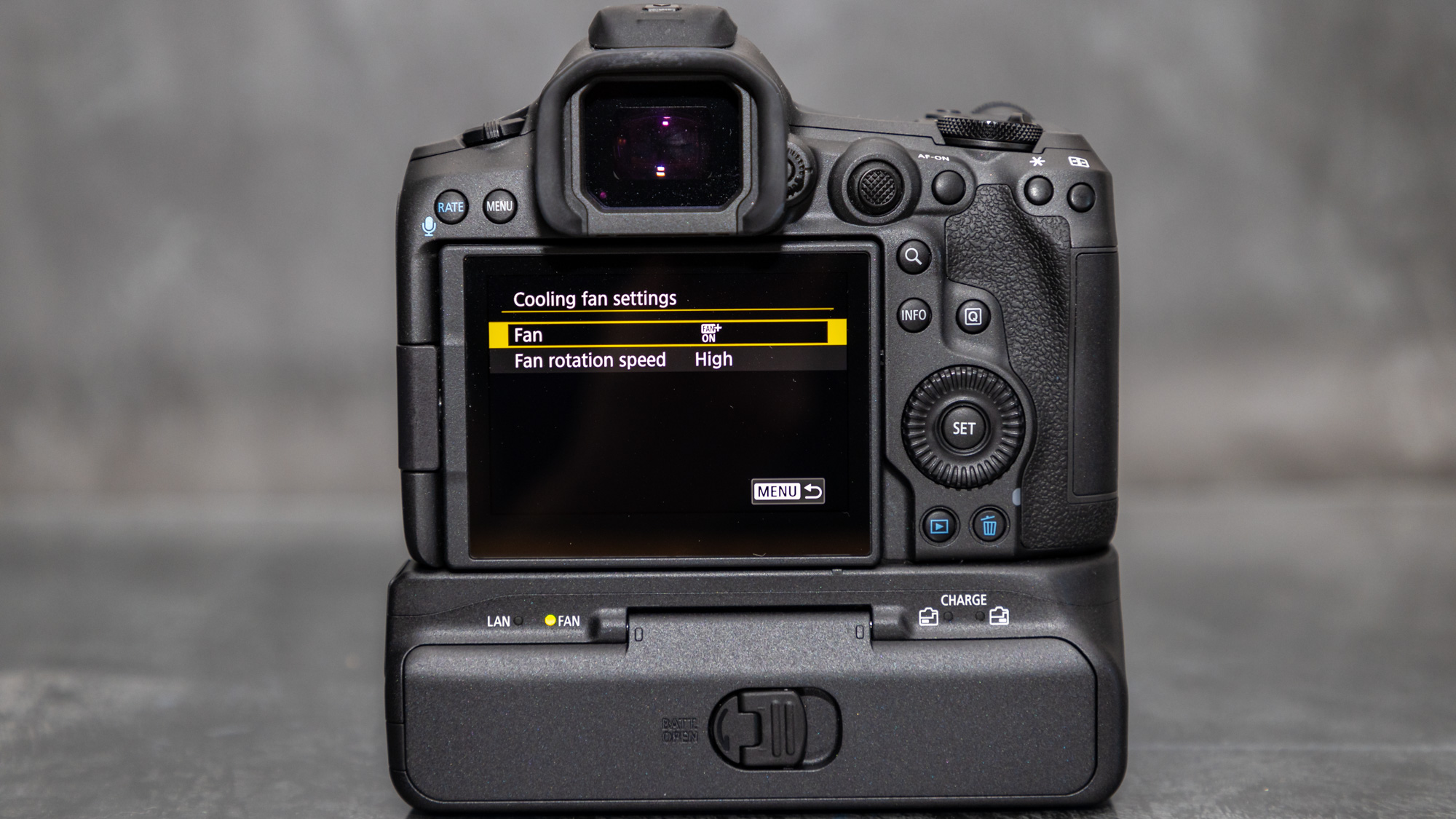
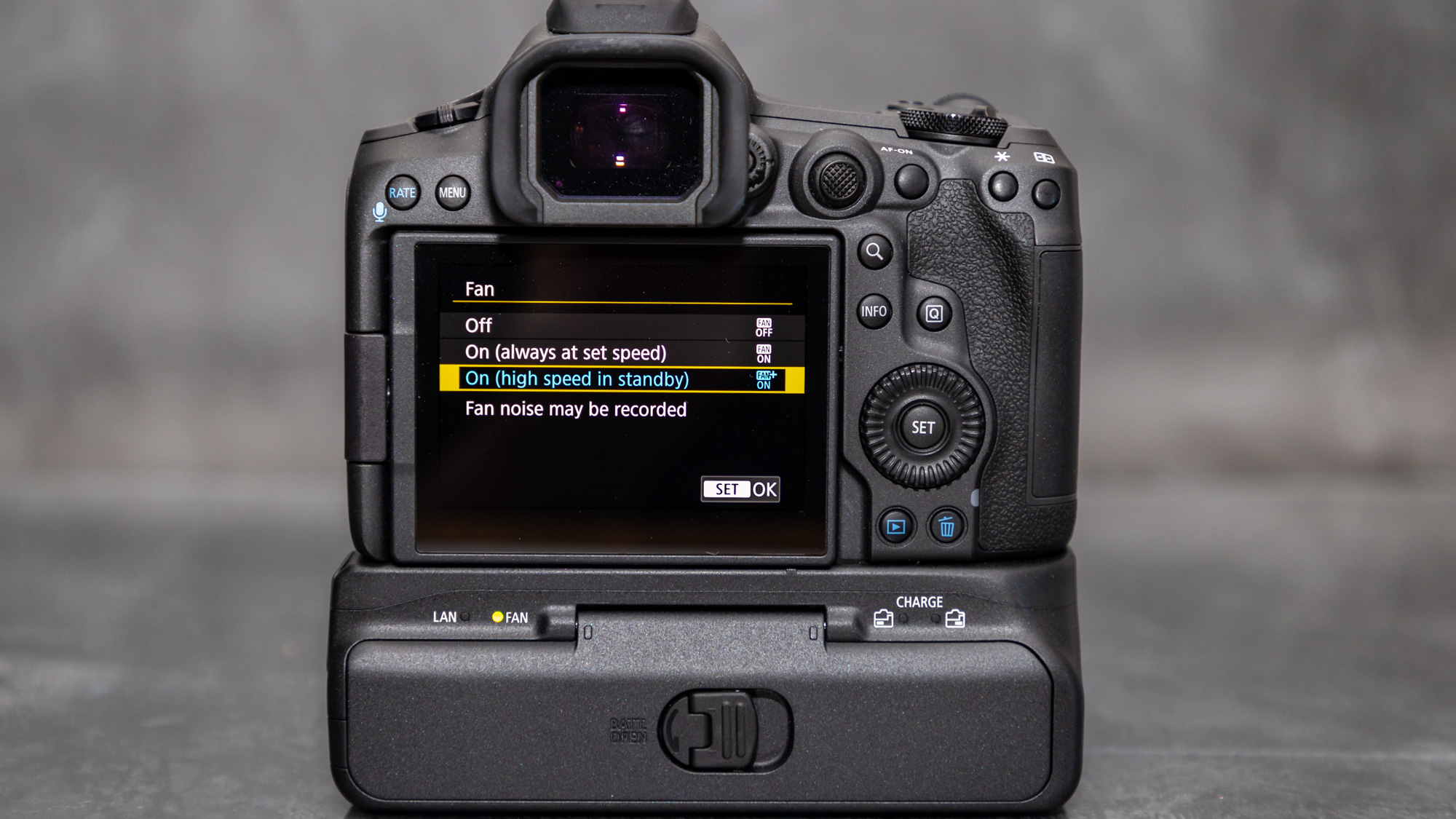
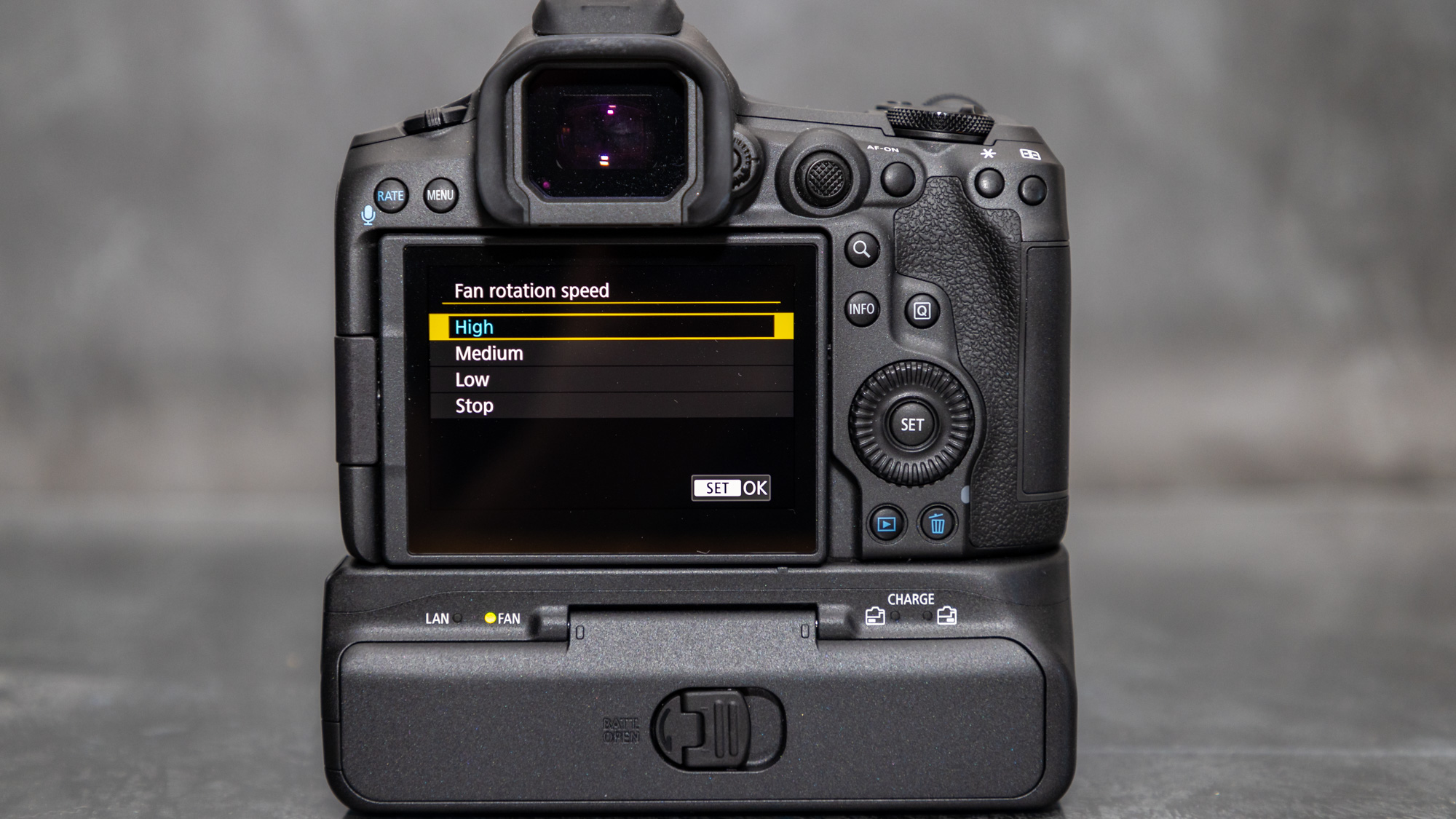
To thoroughly see what the Canon CF-R20EP grip was capable of, I set the EOS R5 Mark II to record 8K-D @25p LGOP / XF-HEVC S YCC422 10-bit. My baseline with no fan switched on was 30 mins before the camera overheated, I then waited between tests for the temperature gauge to cool enough so that it disappeared.
The Low fan power setting is whisper quiet, so much so that I didn’t realise it was on at first. It was also able to extend the recording times by 20% to 36 mins before overheating. Meanwhile, the Medium setting is still usably quiet and extended the record times seemingly indefinitely.
The High setting is quite loud and sure to be picked up by the built-in and hotshoe mounted mics, but not too much of an issue if you’re using wireless mics positioned further away from the camera.
The High setting is certainly useful for cooling the camera down quickly between takes. After forcing the R5 Mark II to overheat it took two mins with the fan set to High to reduce the temperature gauge to an amber level, or 3:40 mins to come back into the 'normal' white level on the R5 II’s temperature gauge. It took 20 mins with the fan running at full blast to cool completely, it took over twice as long to cool without the fan grip in place.
Canon Grips: Verdict
If you own a Canon EOS R5 Mark II then these grips are certainly worth considering. The Canon BG-R20 is brilliant if you find yourself shooting in the portrait orientation a lot, or like the convenience of loading up two batteries at a time so you can shoot for longer. The Canon BG-R20 builds on this and adds an Ethernet port for fast 2.5Gbps transfer speeds to FTPs and makes it feel more in line with Canon’s flagship EOS R1, though it does cost $150 more at $499. If you’re not planning to utilize this feature we’d recommend sticking to the base model.
The Canon CF-R20EP was for me the most interesting, as I’ve never seen a battery grip include a fan before. In fact, this alongside cooling vents on the camera, was something I called for when the EOS R5 Mark I first came out in 2020. This cooling fan grip is admittedly more aimed at video users where the benefit of the cooling fan extends the shooting speed dramatically, plus you have the positives of using two batteries to shoot for longer, though it omits any of the usual buttons and dials to help you shoot in the portrait orientation, the other two grips cater for that.
It’s a good design choice for Canon to also include an Ethernet port here as if you're shooting 4K or 8K video for extended periods enough to warrant using the cooling grip then you're very likely going to end up with some huge video files and the 2.5Gbps transfer speeds of the Ethernet connection give users a reliable and fast way to shift this gargantuan files.
My biggest reservation with this model is the fan speed can only be changed in a menu which can’t be accessed whilst recording. There’s also no variable fan speed setting either, so a physical switch or dial on the grip itself would have been really useful here. That said, it is the only option available at the moment. So if you need those extended record times this is a quirk you’ll need to work around.
As a Canon R5 Mark I owner that uses a Neewer grip for the camera, I think it's likely we'll see a standard BG-R20-equivalent third-party battery grip for the R5 Mark II at some point, though it's much less likely that we'll see a cooling fan grip from third parties given that it relies so much on in-camera menus and software integration.
Should you buy one of the Canon R5 Mark II battery grips?
✅ Buy it...
- You need to shoot in the portrait orientation with an EOS R5 Mark II
- You need to extend video recording times or transfer files over Ethernet with your Canon EOS R5 Mark II
🚫 Don't buy it...
- You don't own a Canon EOS R5 Mark II
- You own an EOS R5 Mark I – the grips aren't compatible

Deputy Editor on PhotoPlus: The Canon Magazine, Dan also brings his technical wizardry and editing skills to Digital Camera World. He has been writing about all aspects of photography for over 10 years, having previously served as technical writer and technical editor for Practical Photography magazine, as well as Photoshop editor on Digital Photo.
Dan is an Adobe-certified Photoshop guru, making him officially a beast at post-processing – so he’s the perfect person to share tips and tricks both in-camera and in post. Able to shoot all genres, Dan provides news, techniques and tutorials on everything from portraits and landscapes to macro and wildlife, helping photographers get the most out of their cameras, lenses, filters, lighting, tripods, and, of course, editing software.
You must confirm your public display name before commenting
Please logout and then login again, you will then be prompted to enter your display name.
